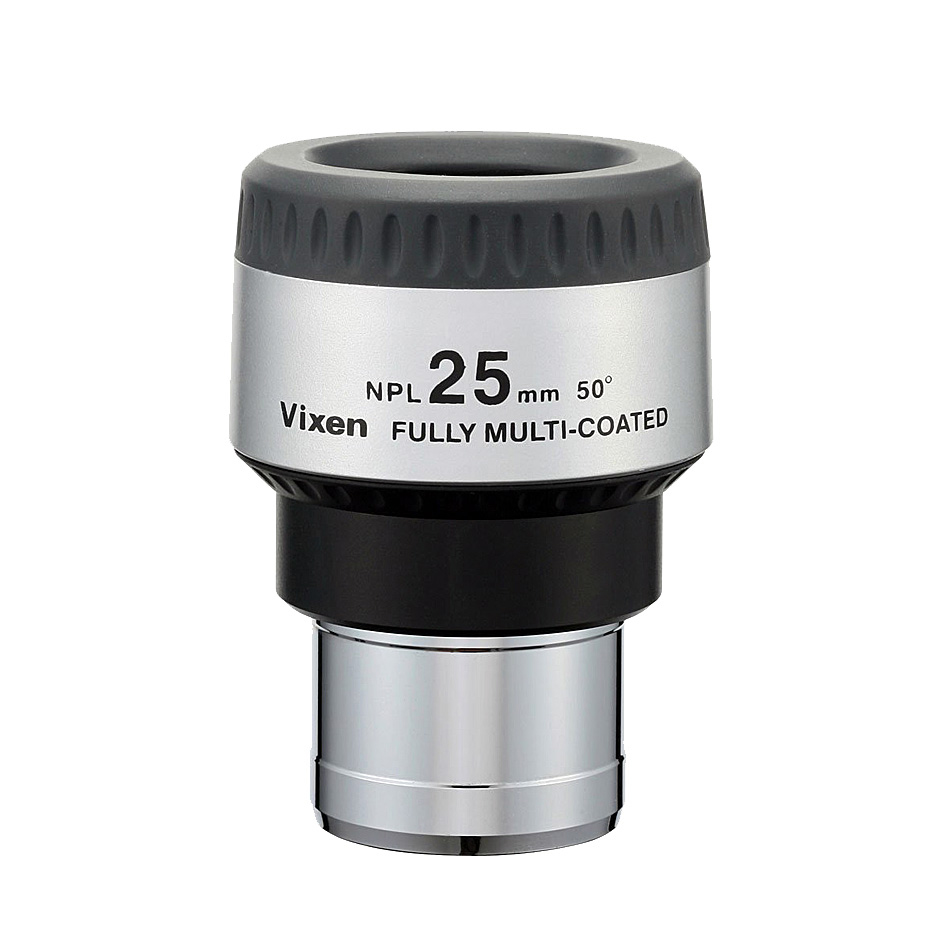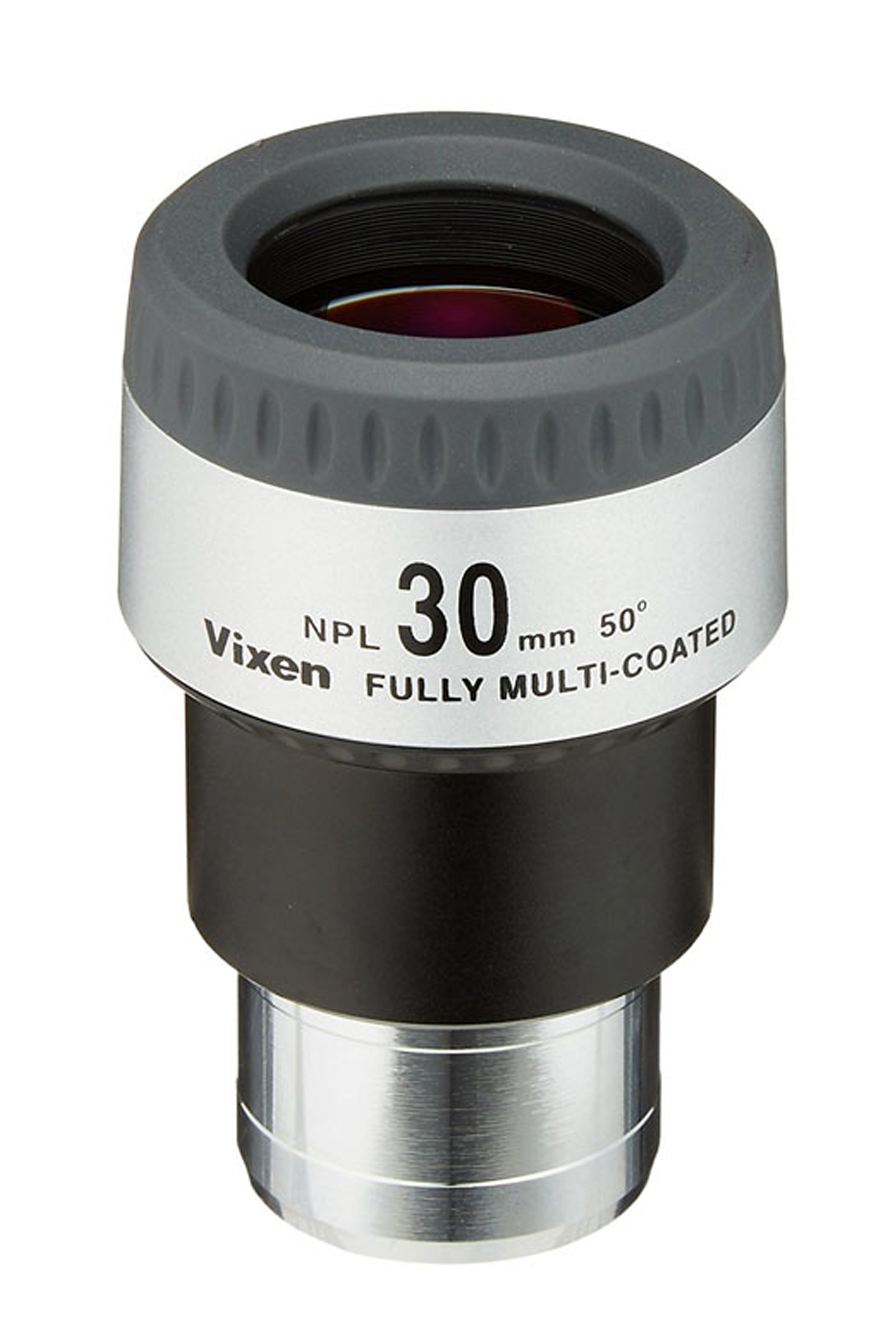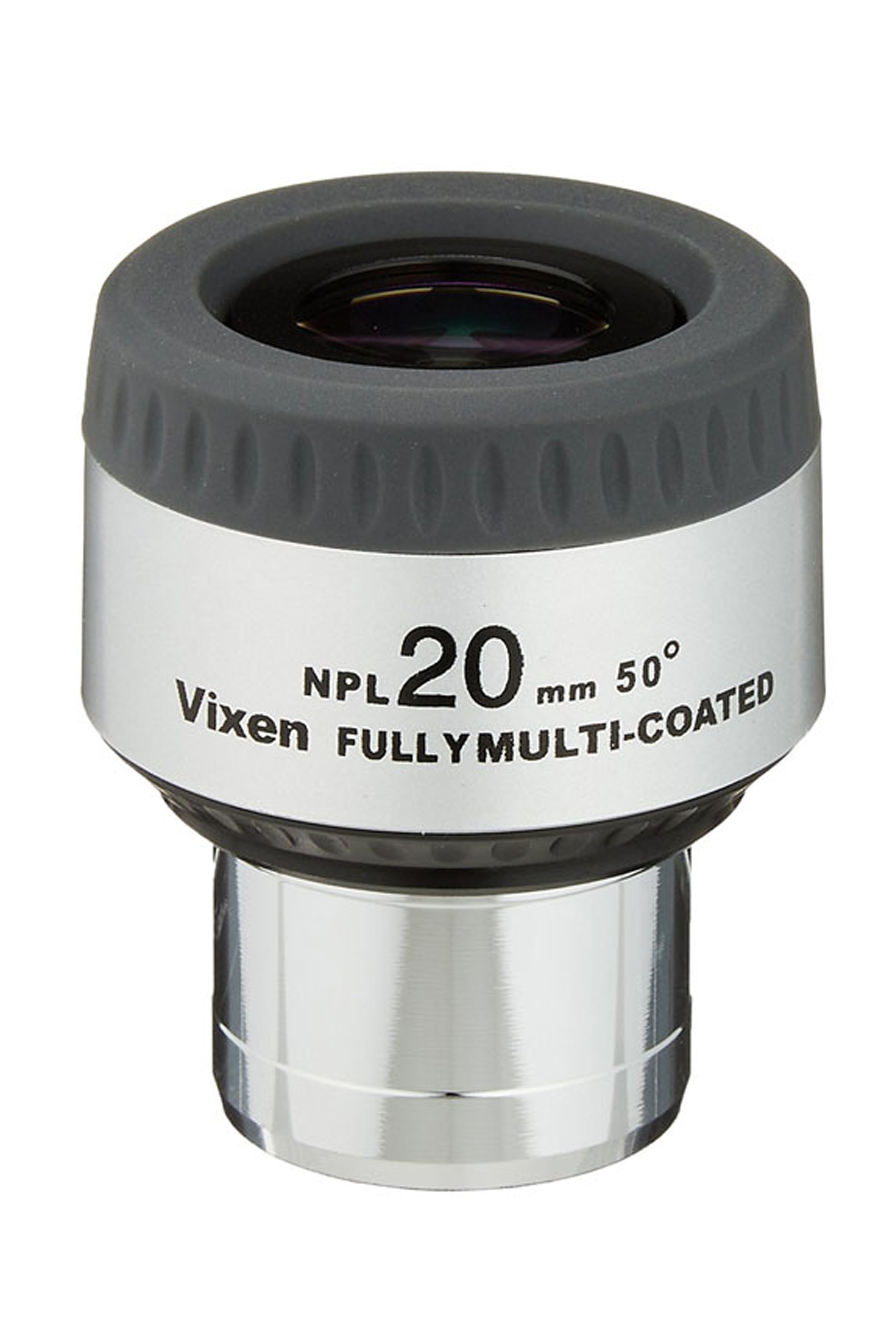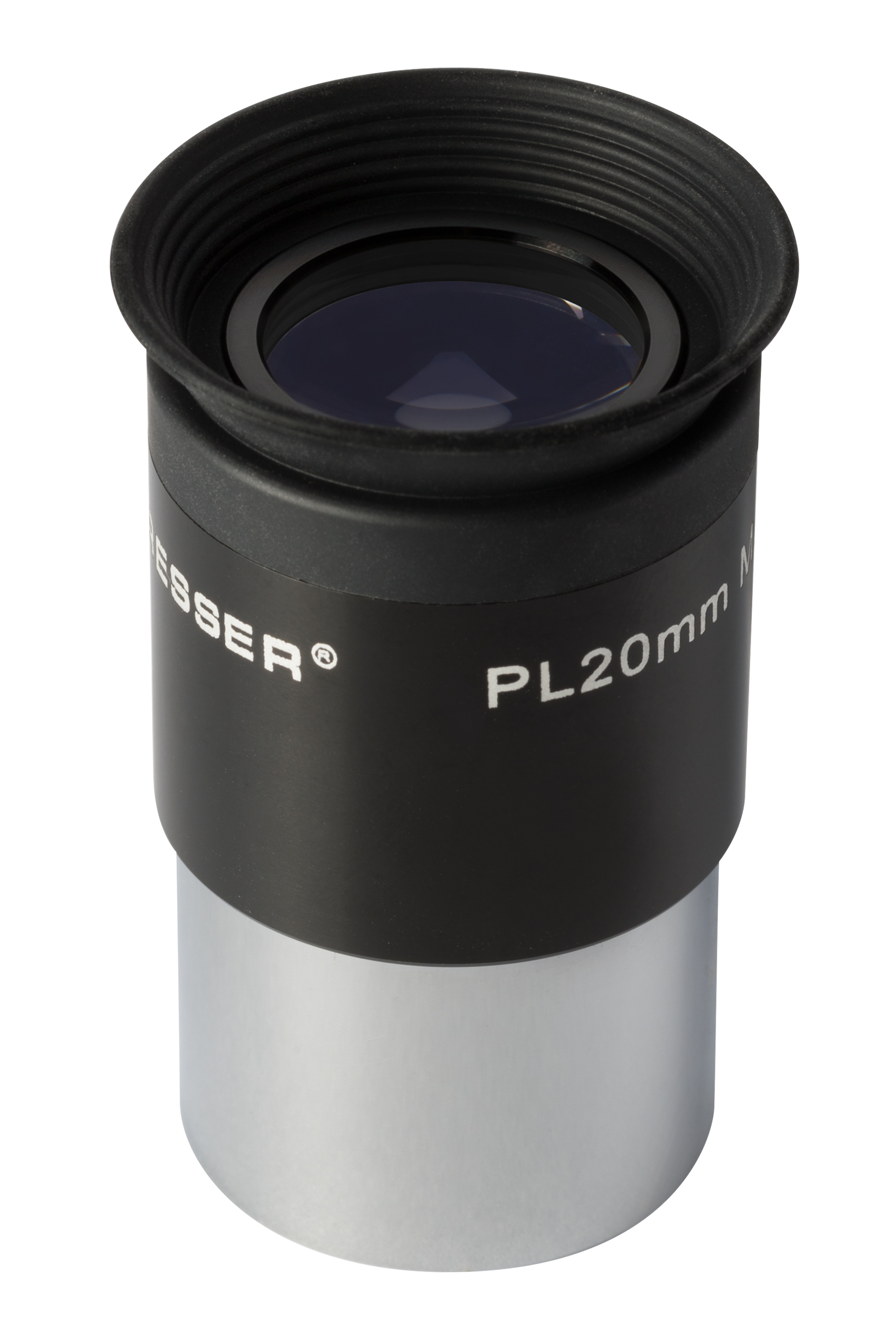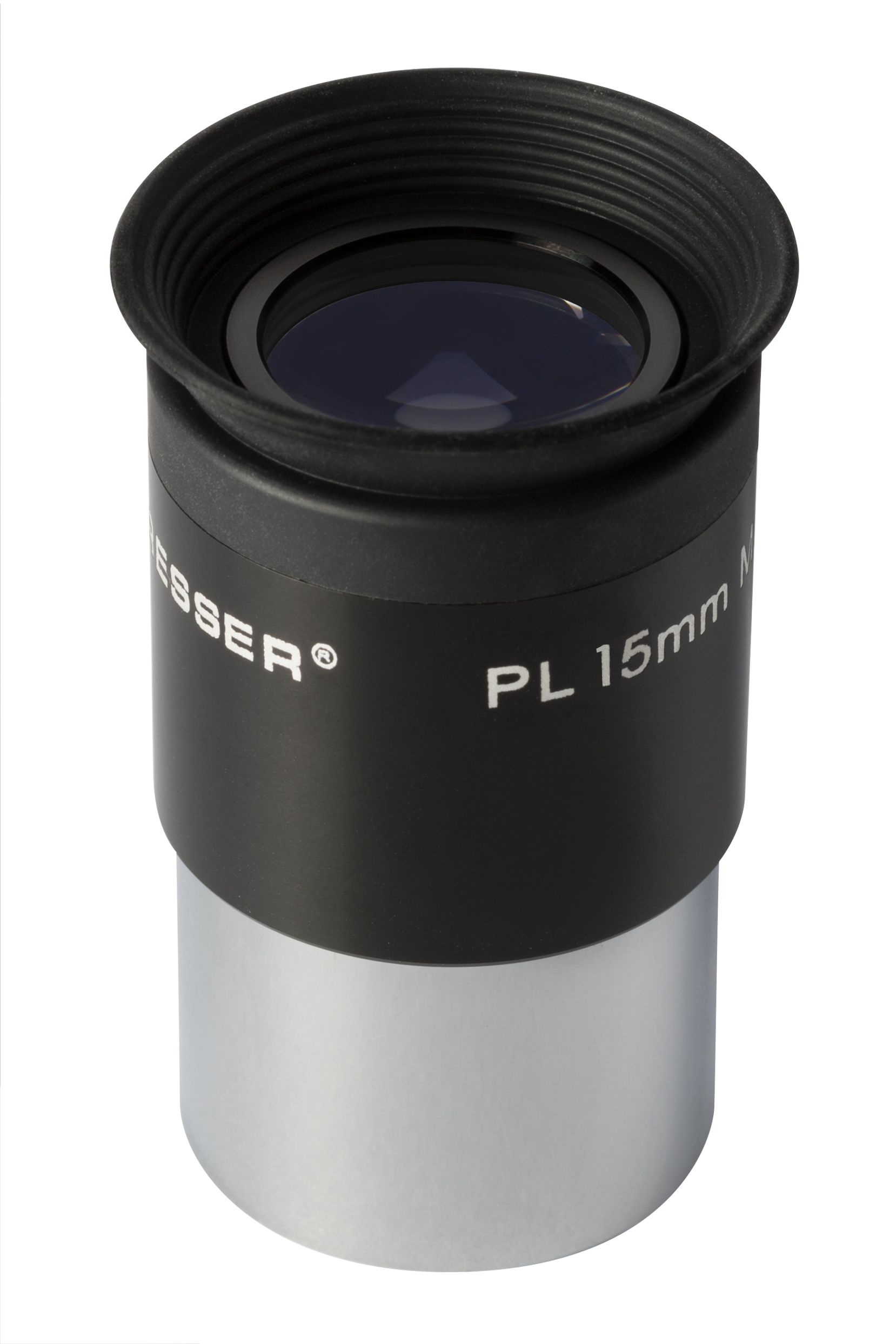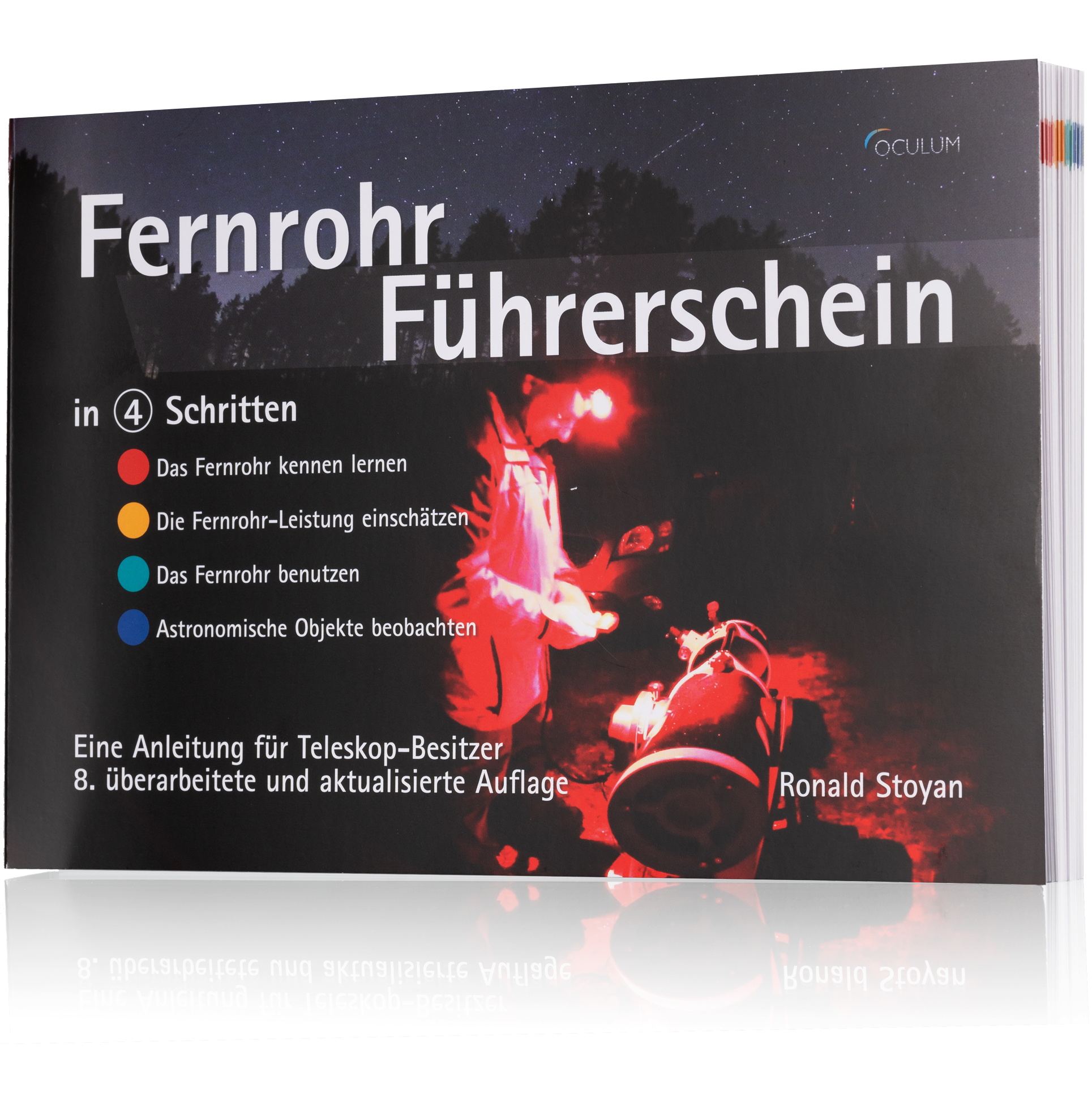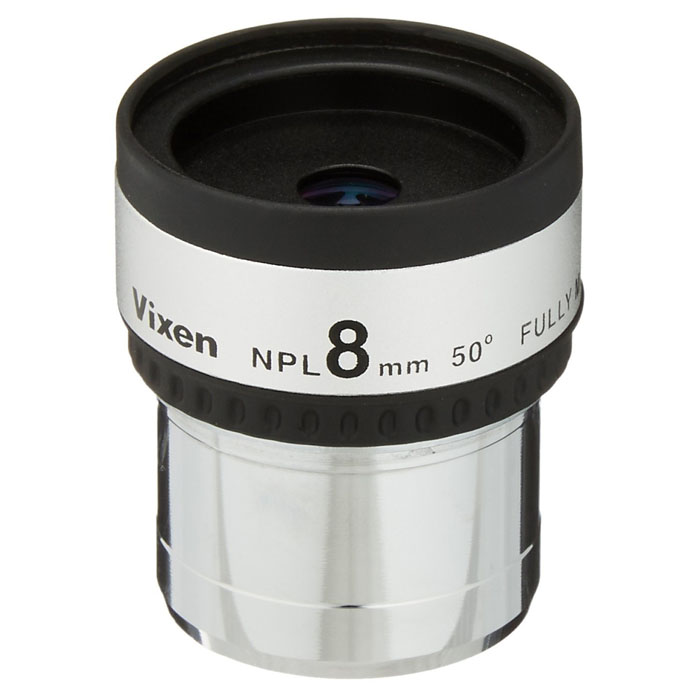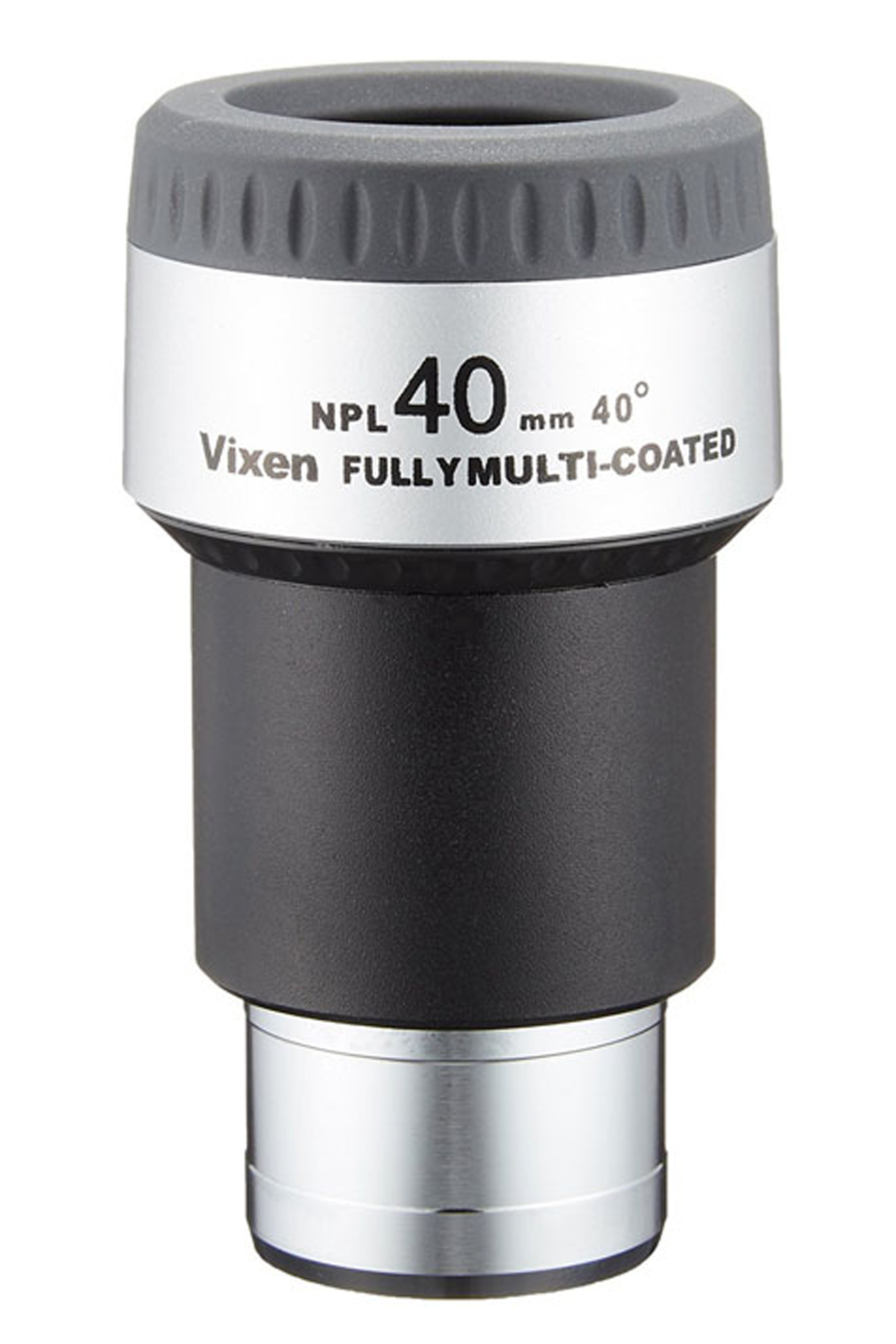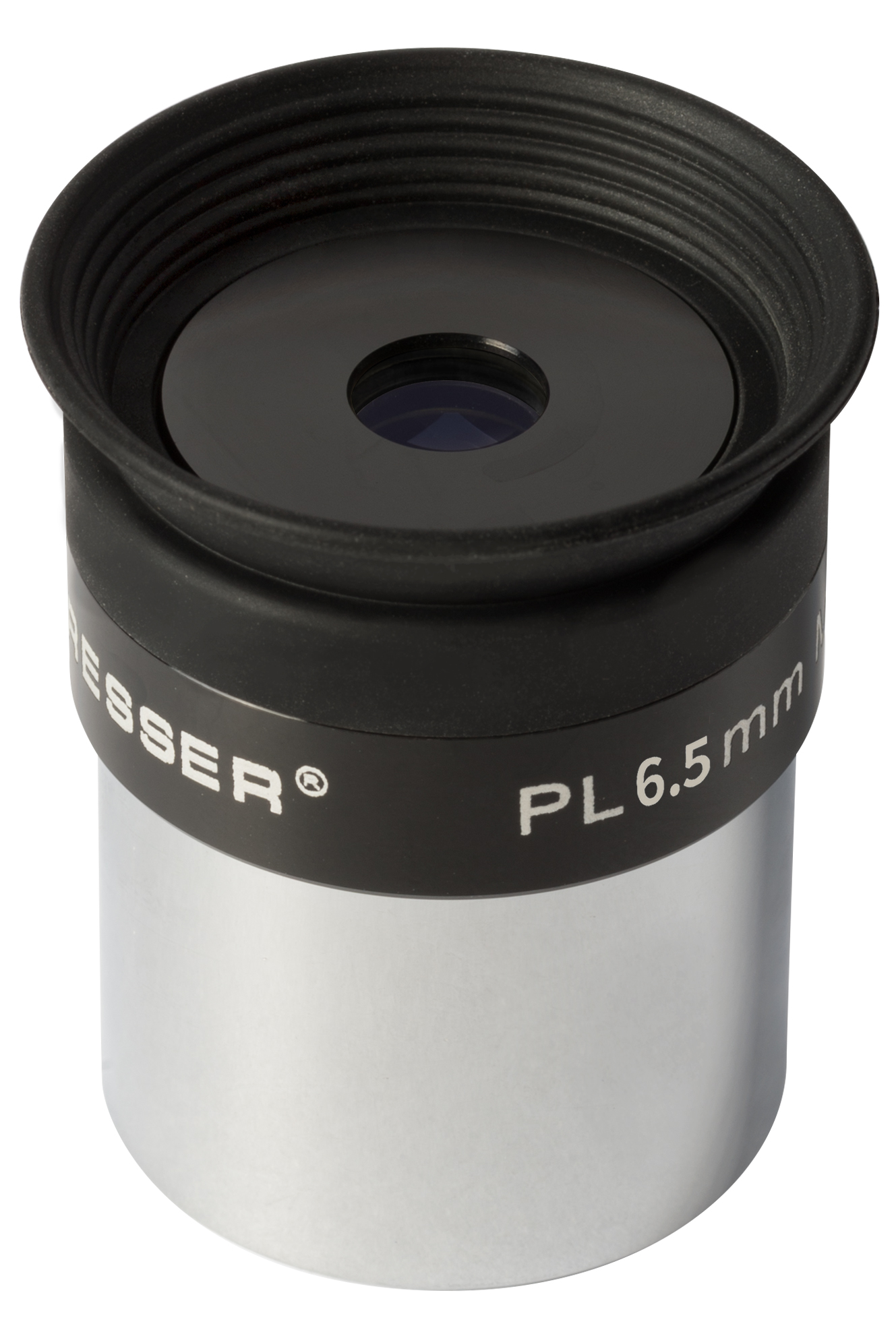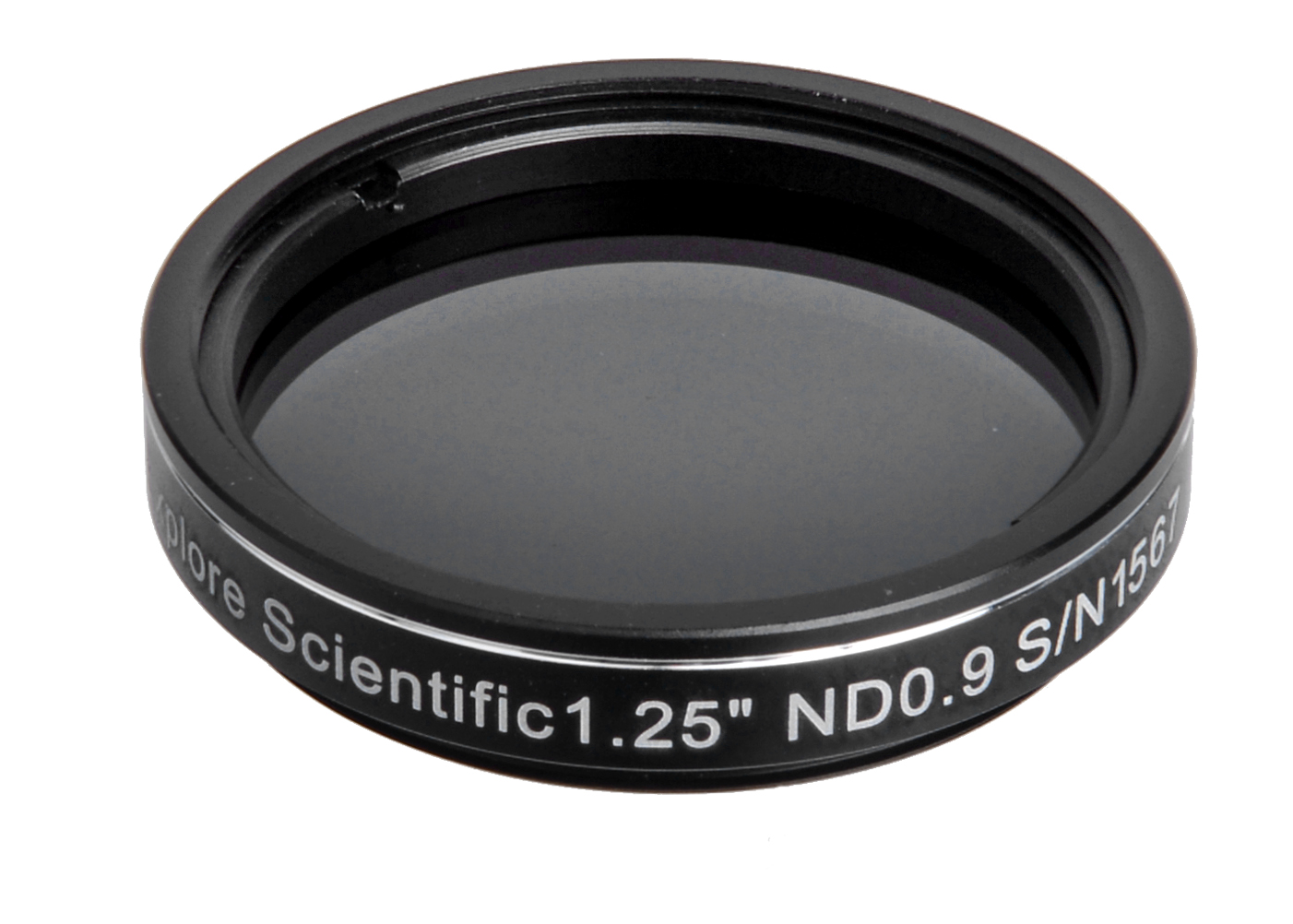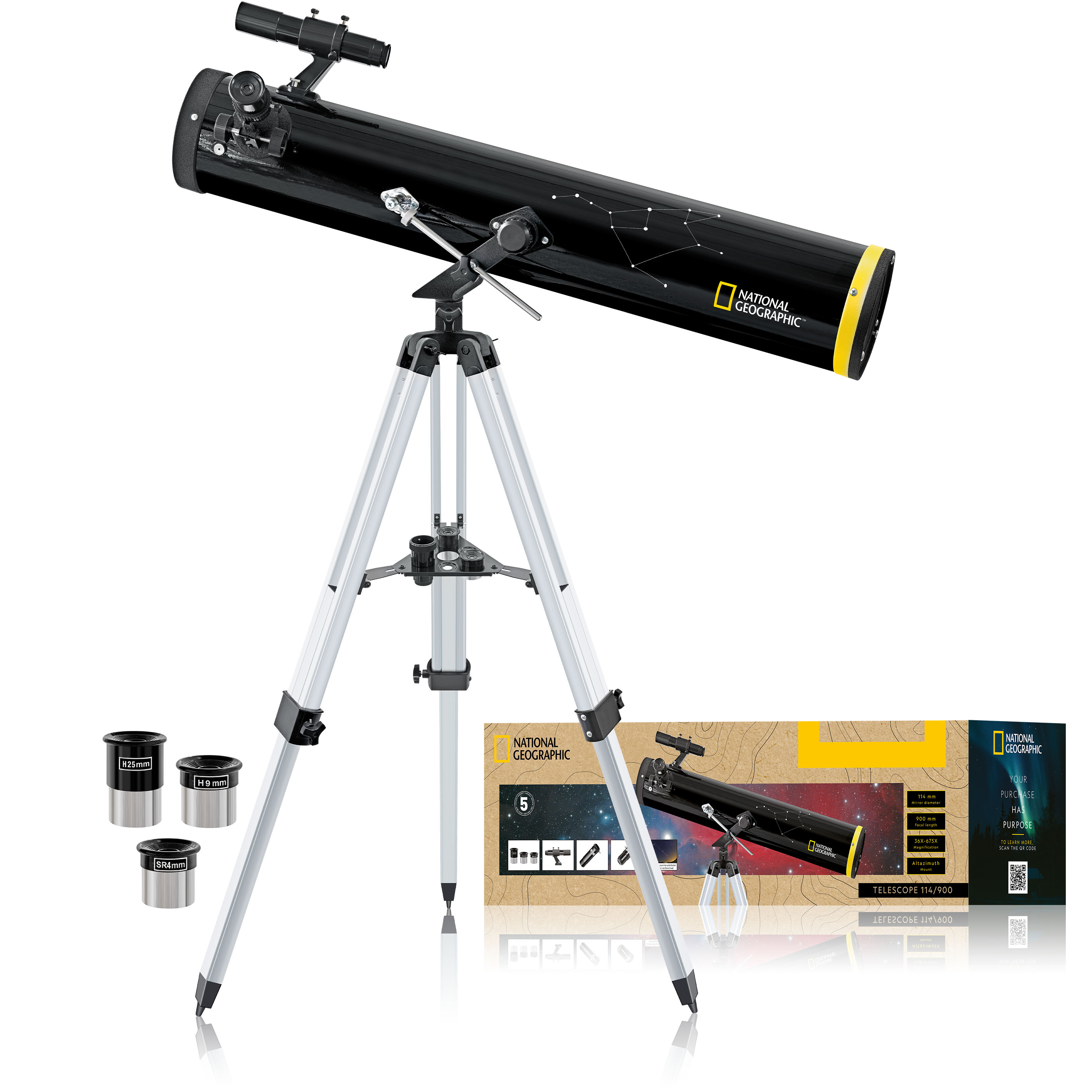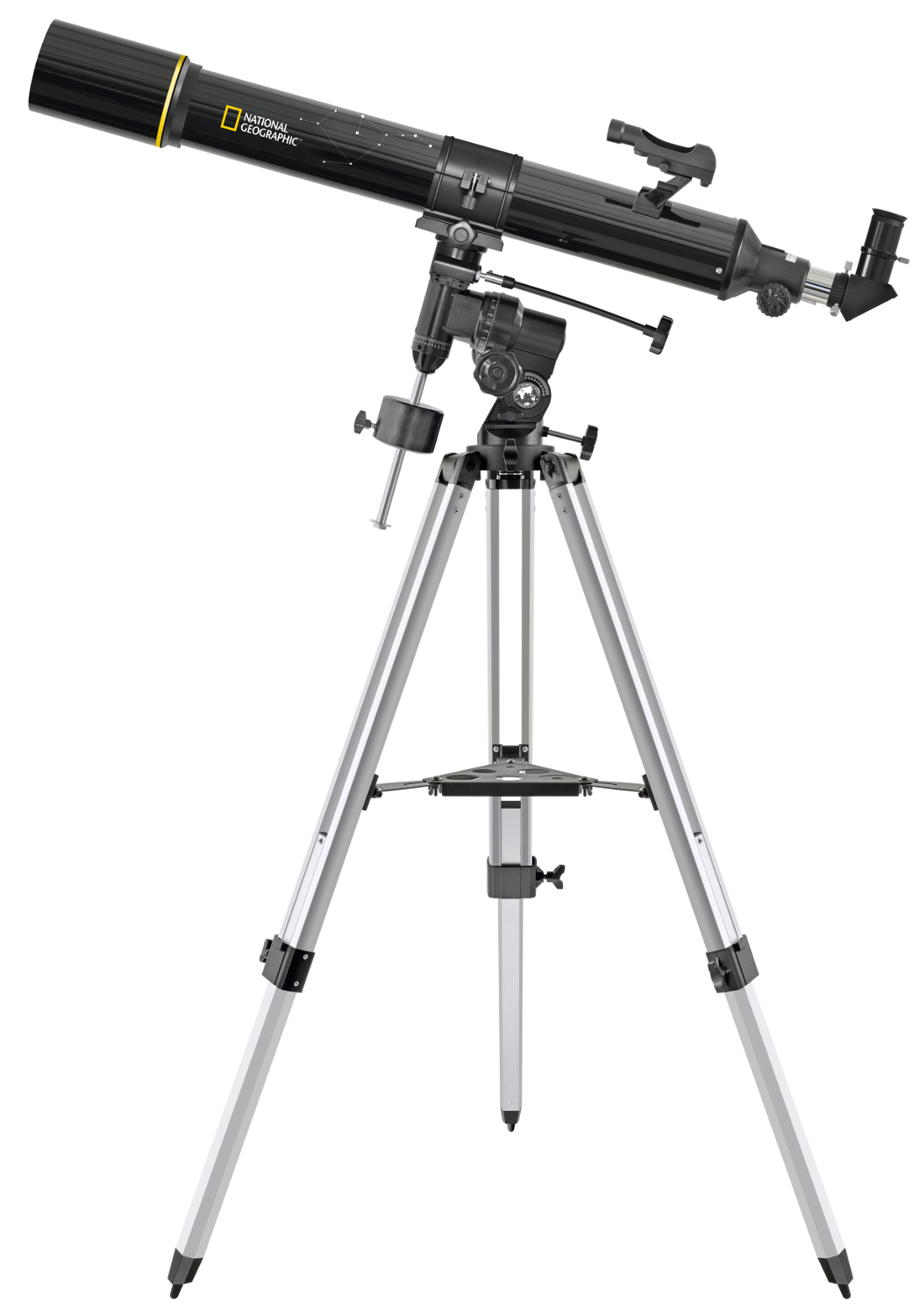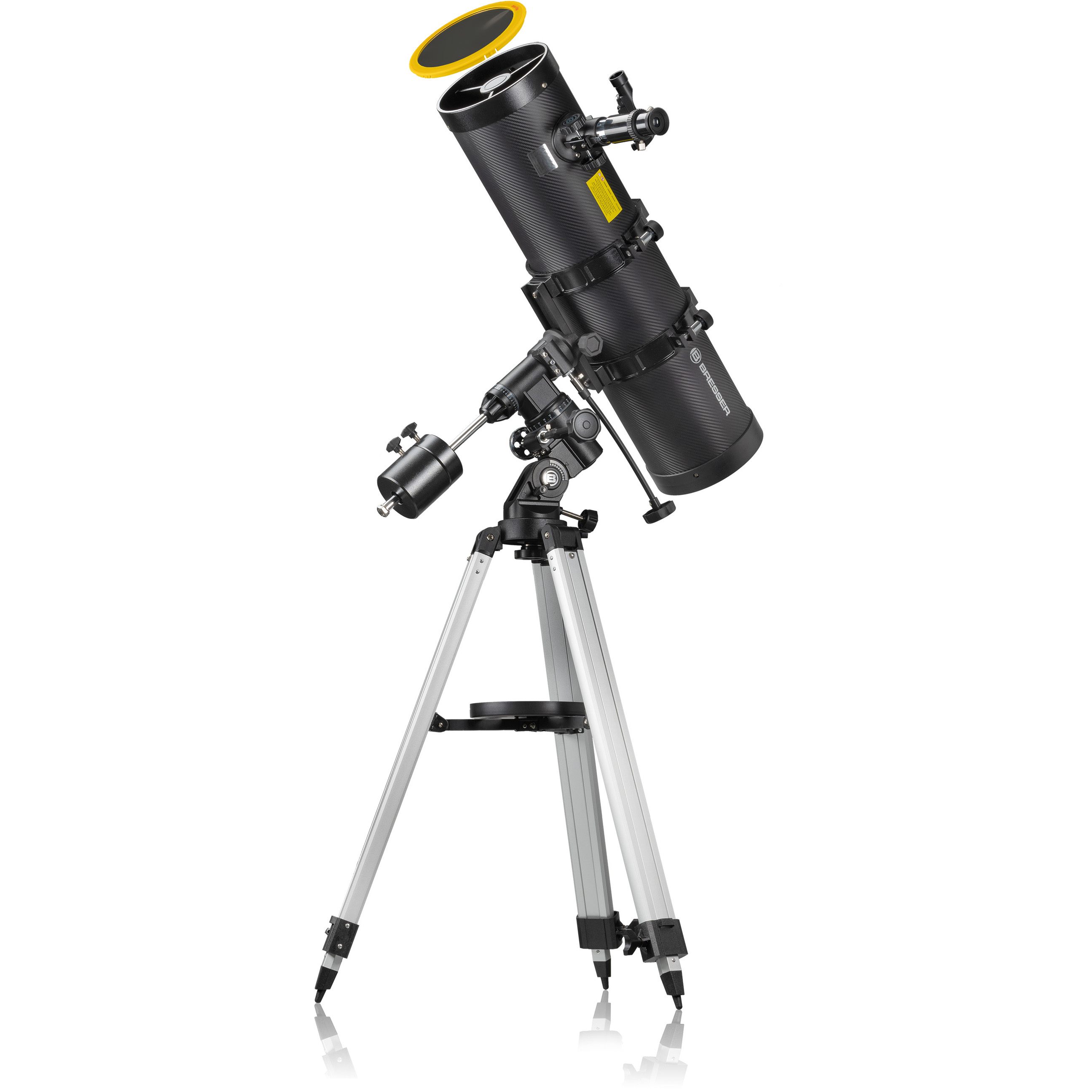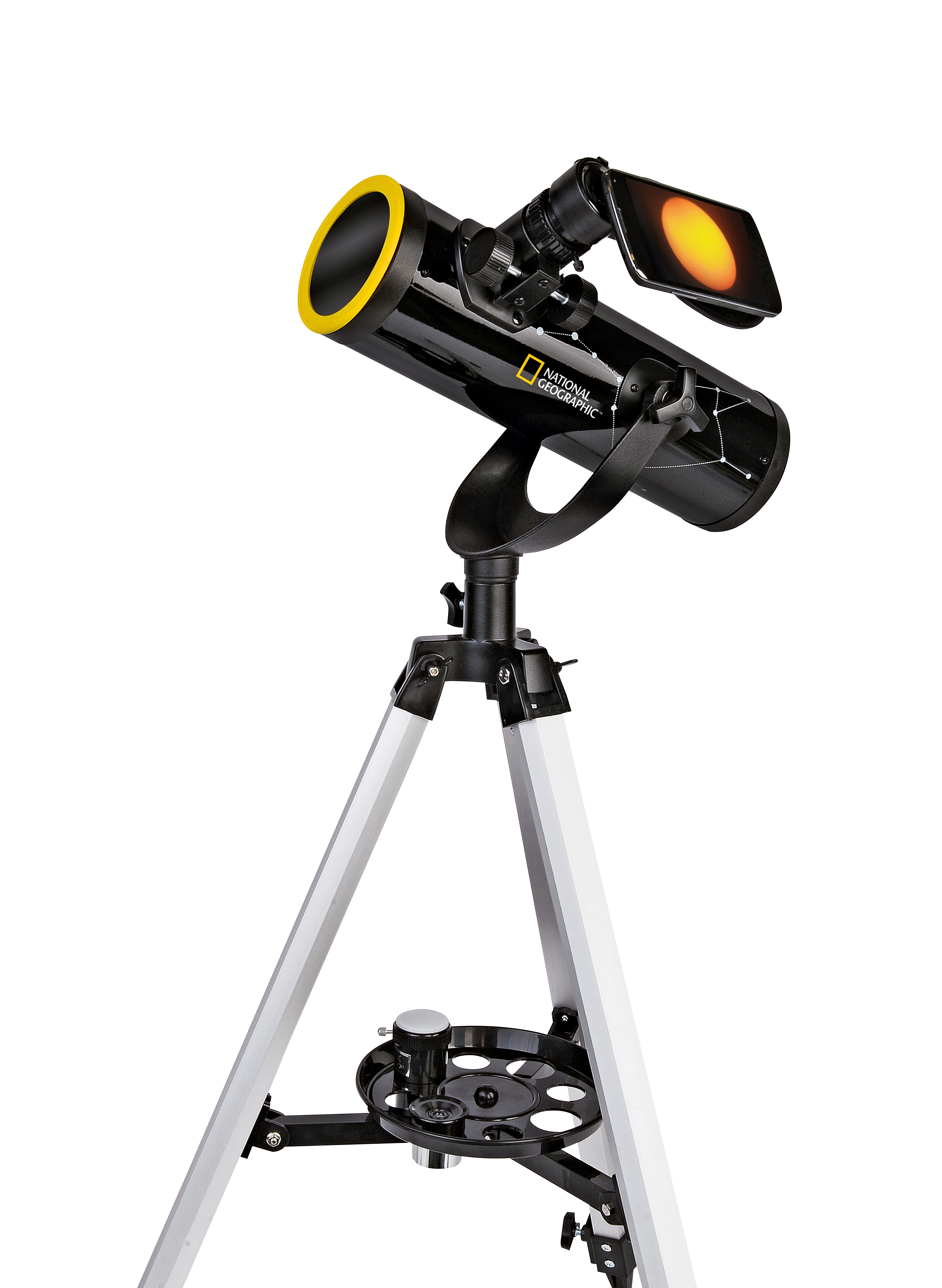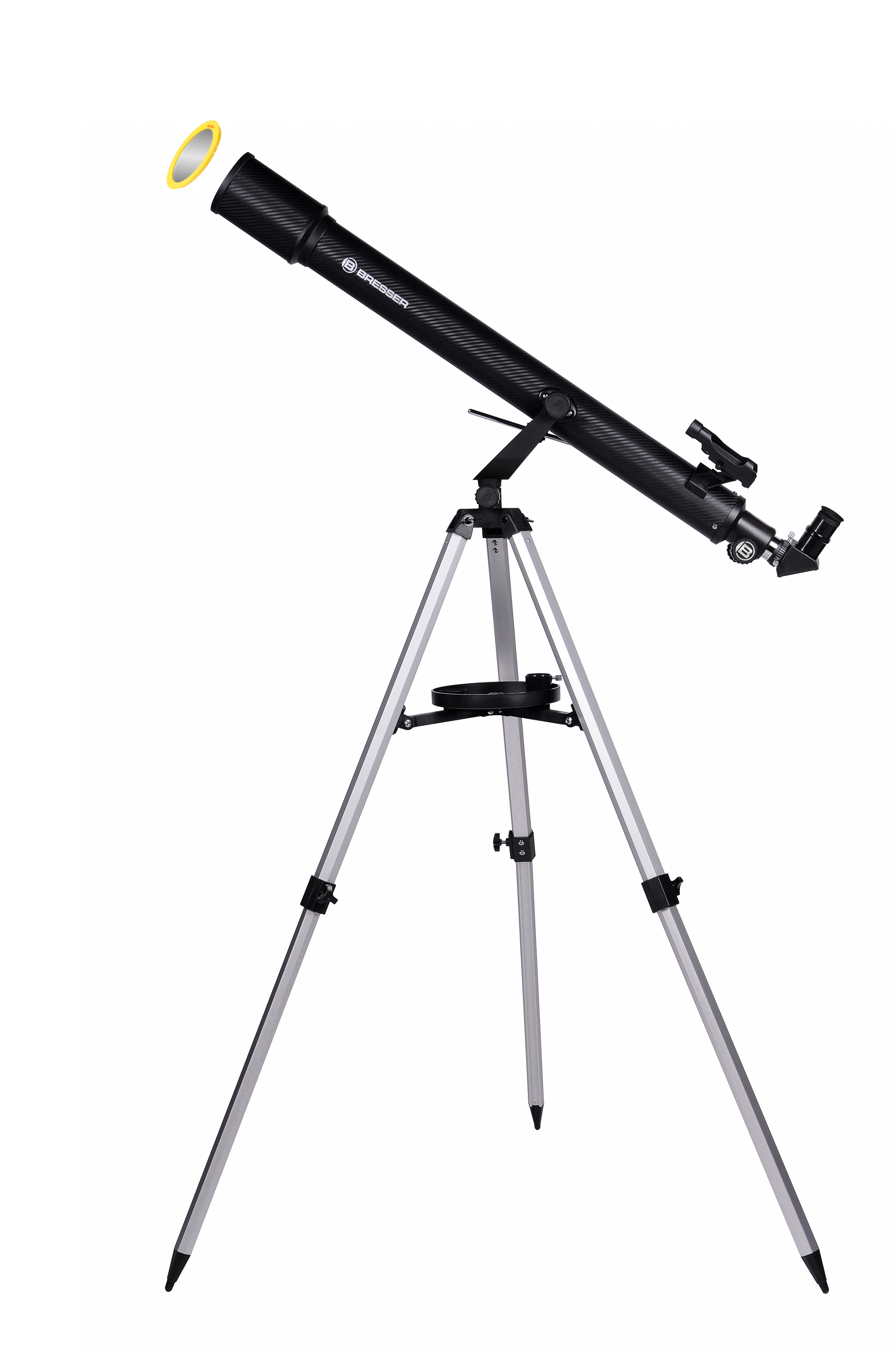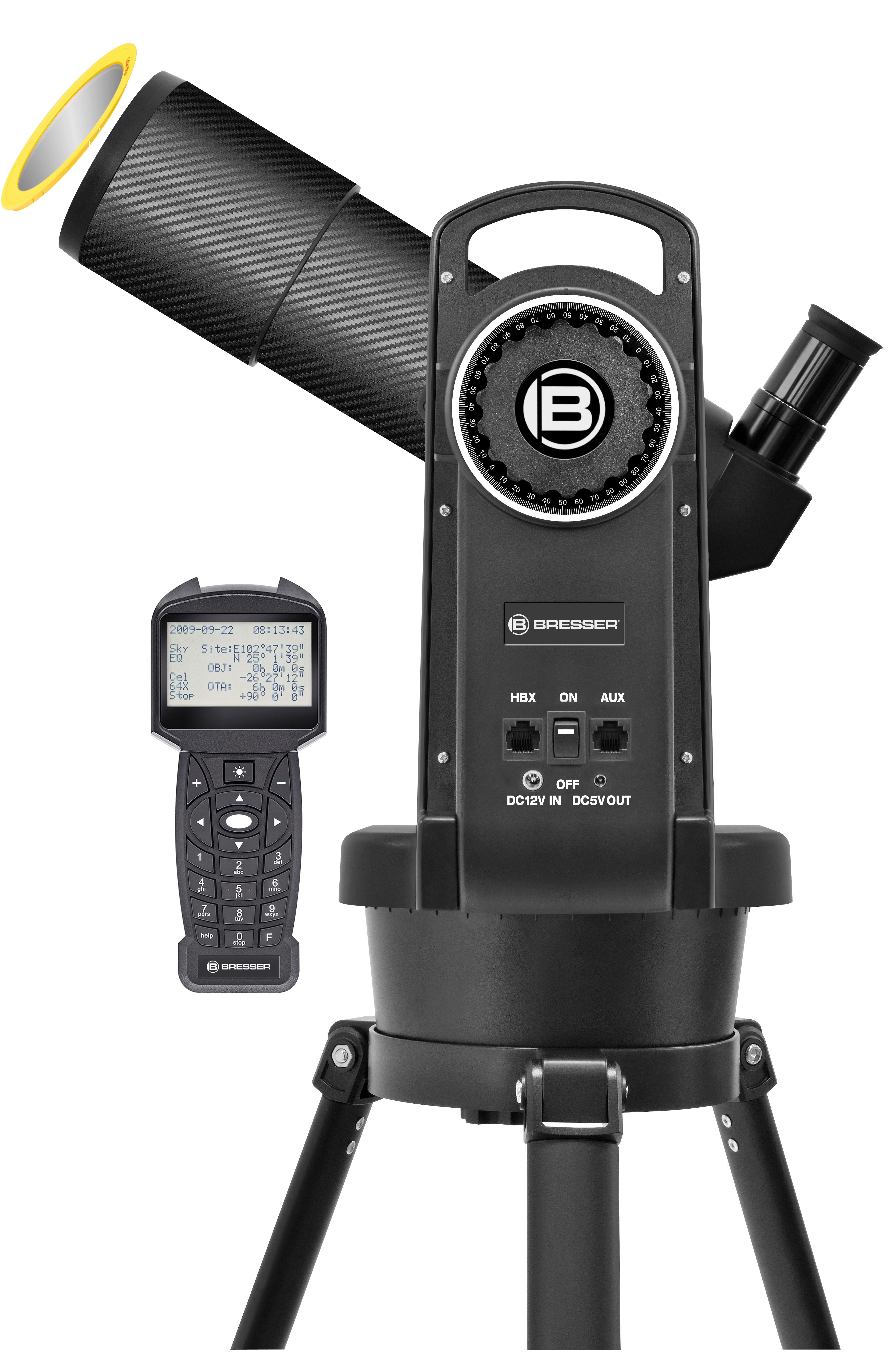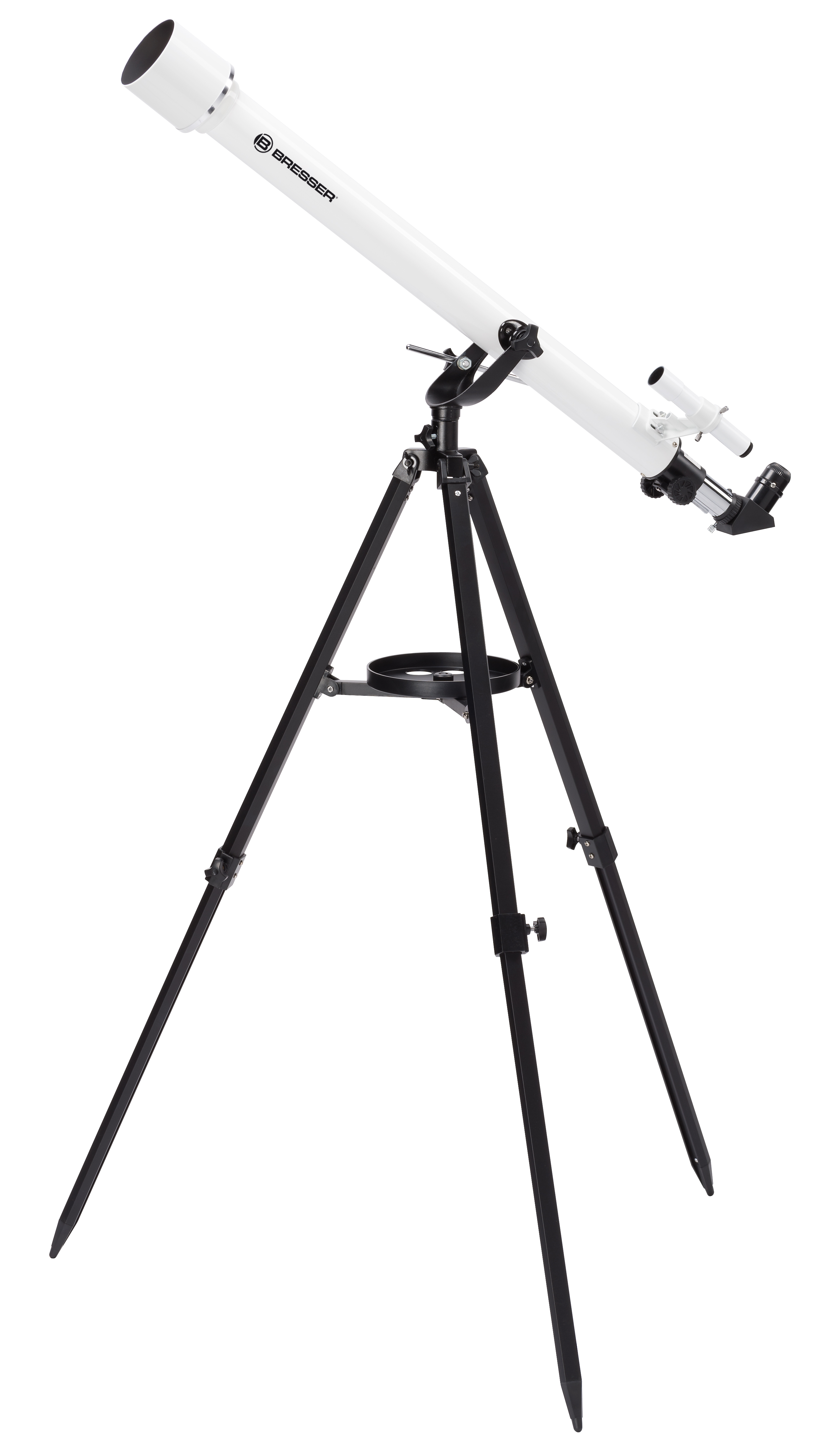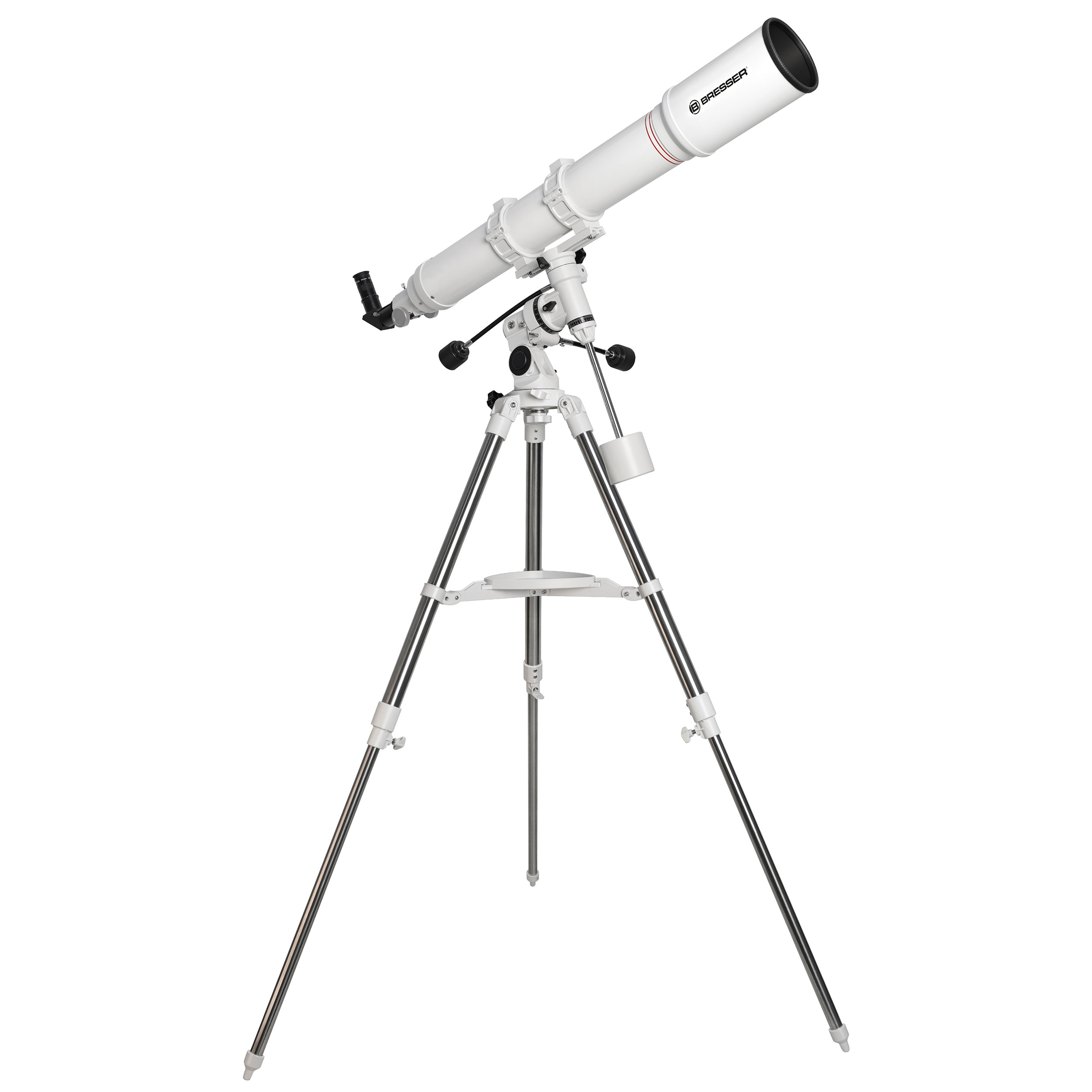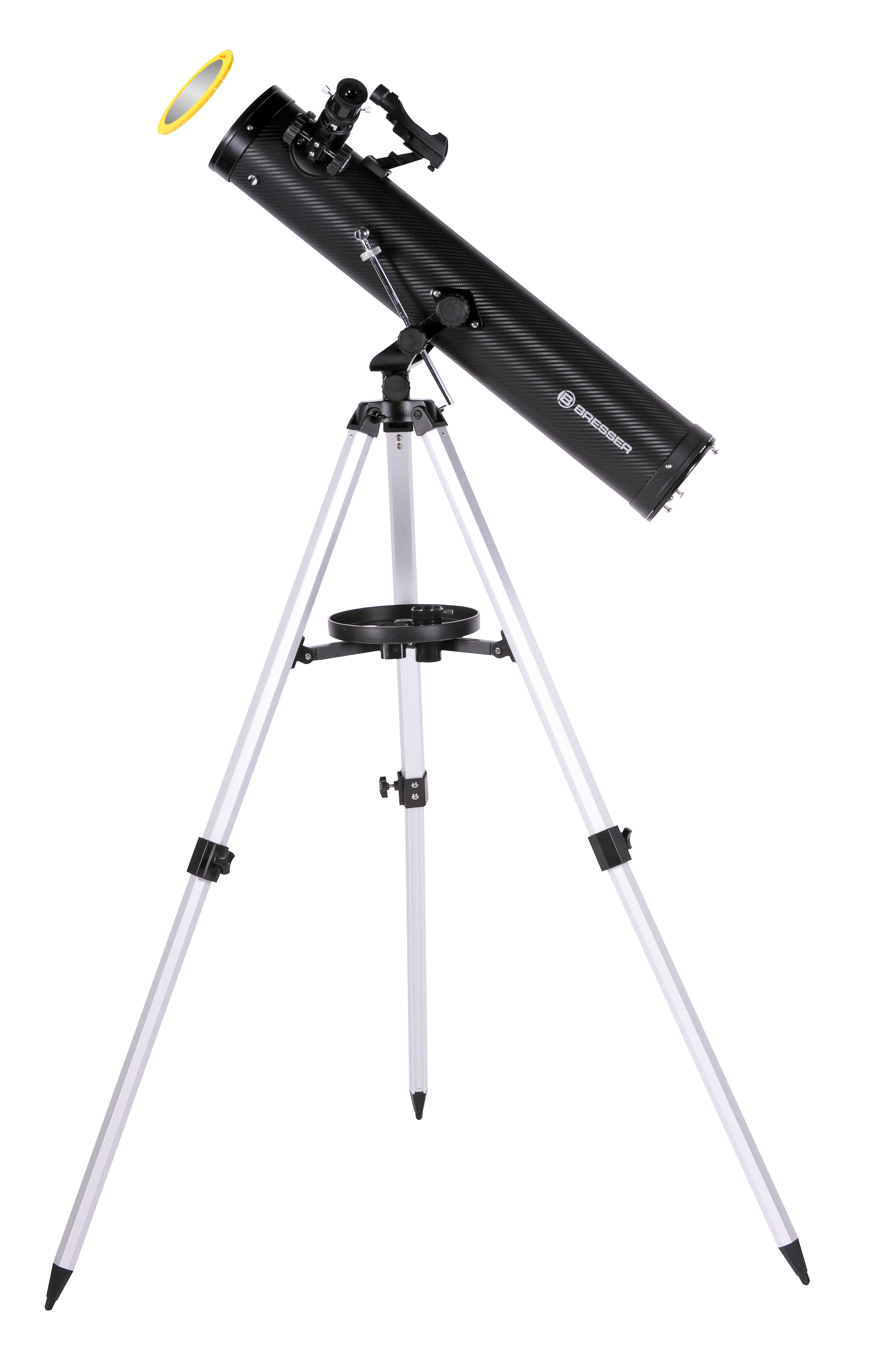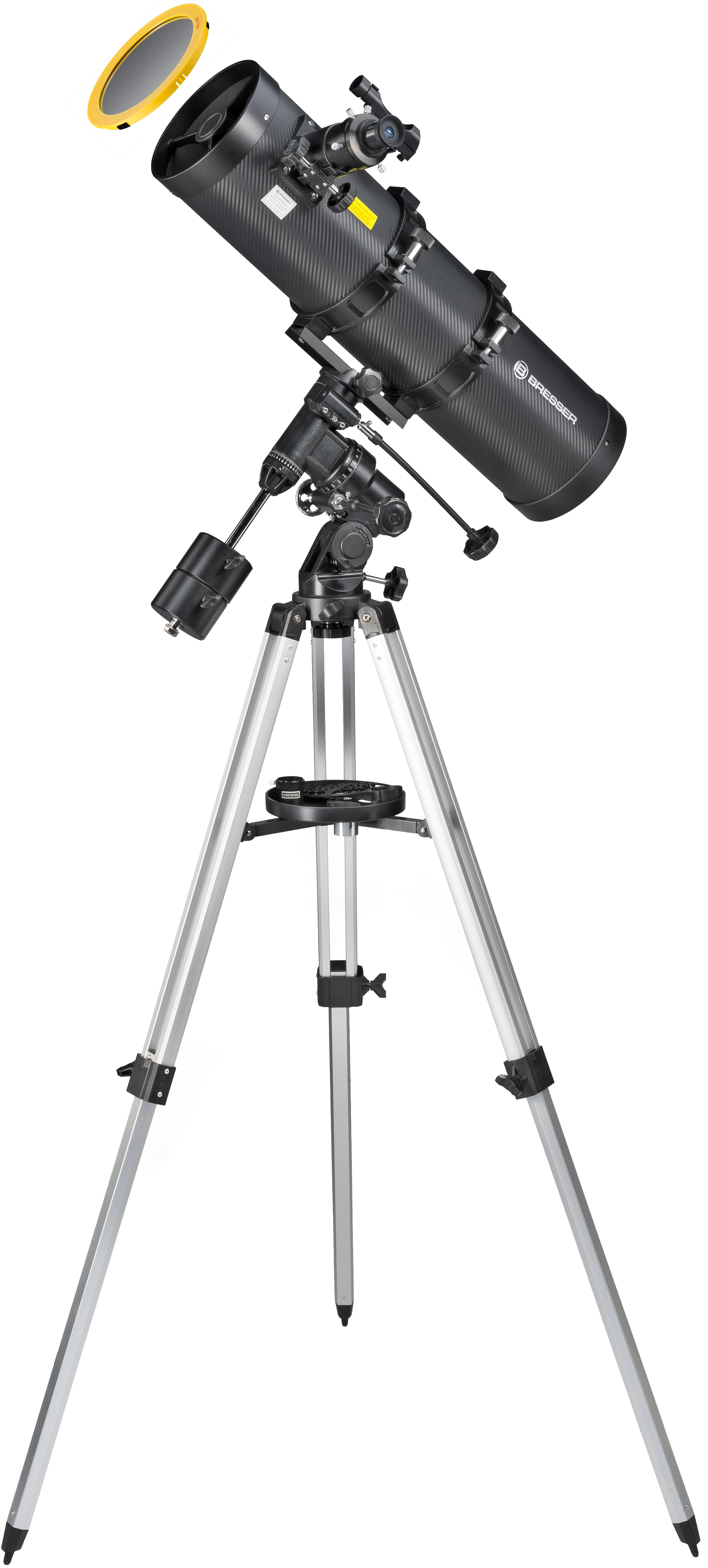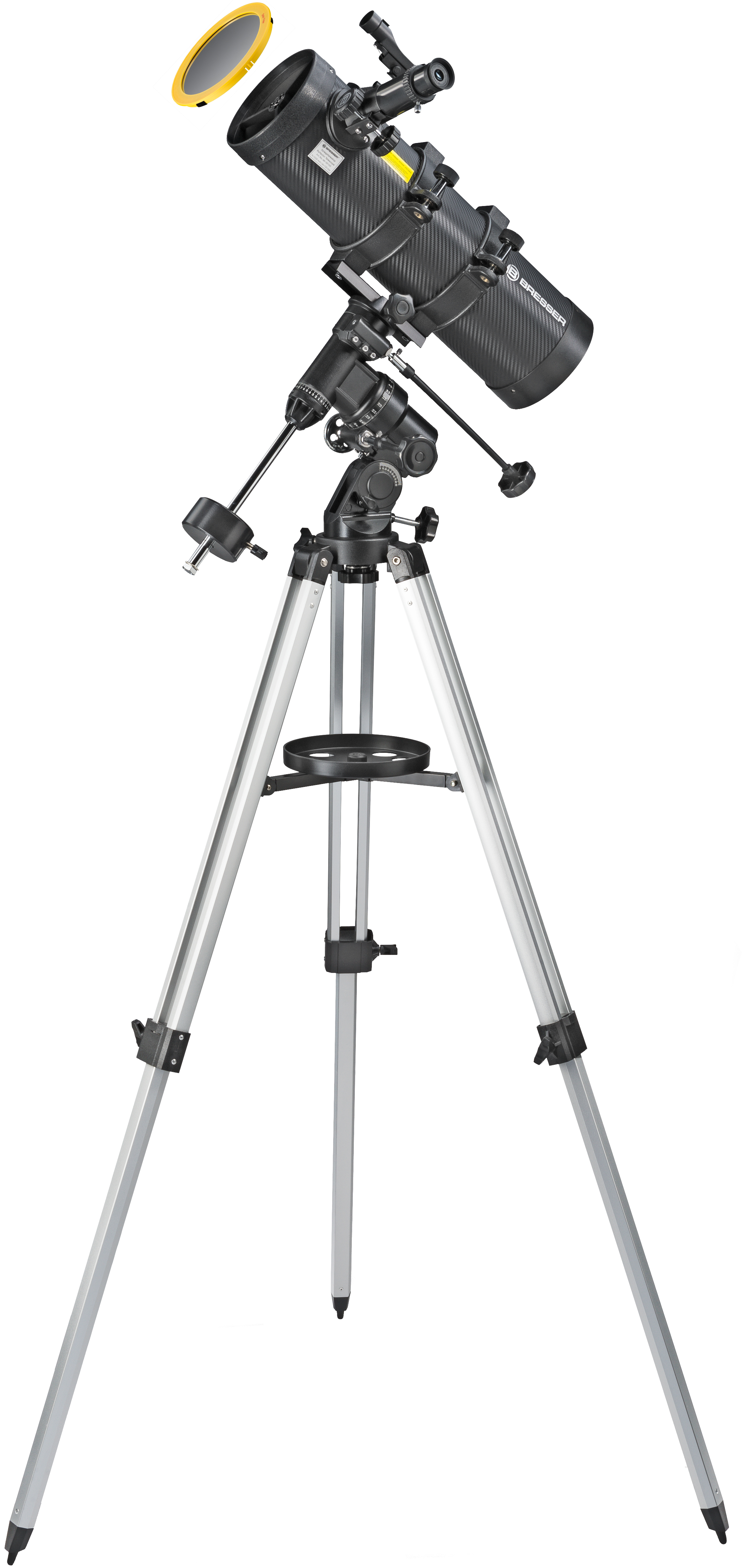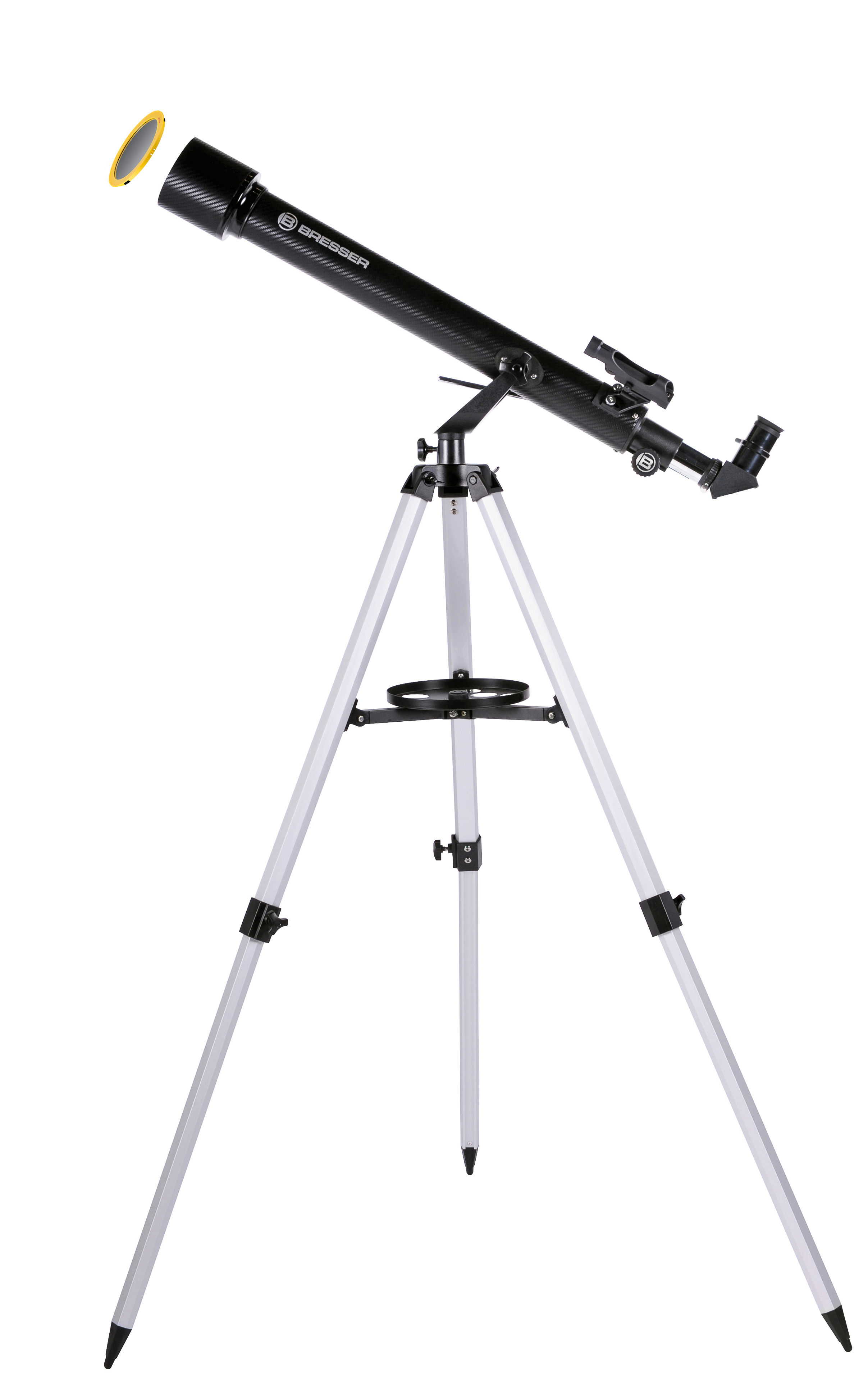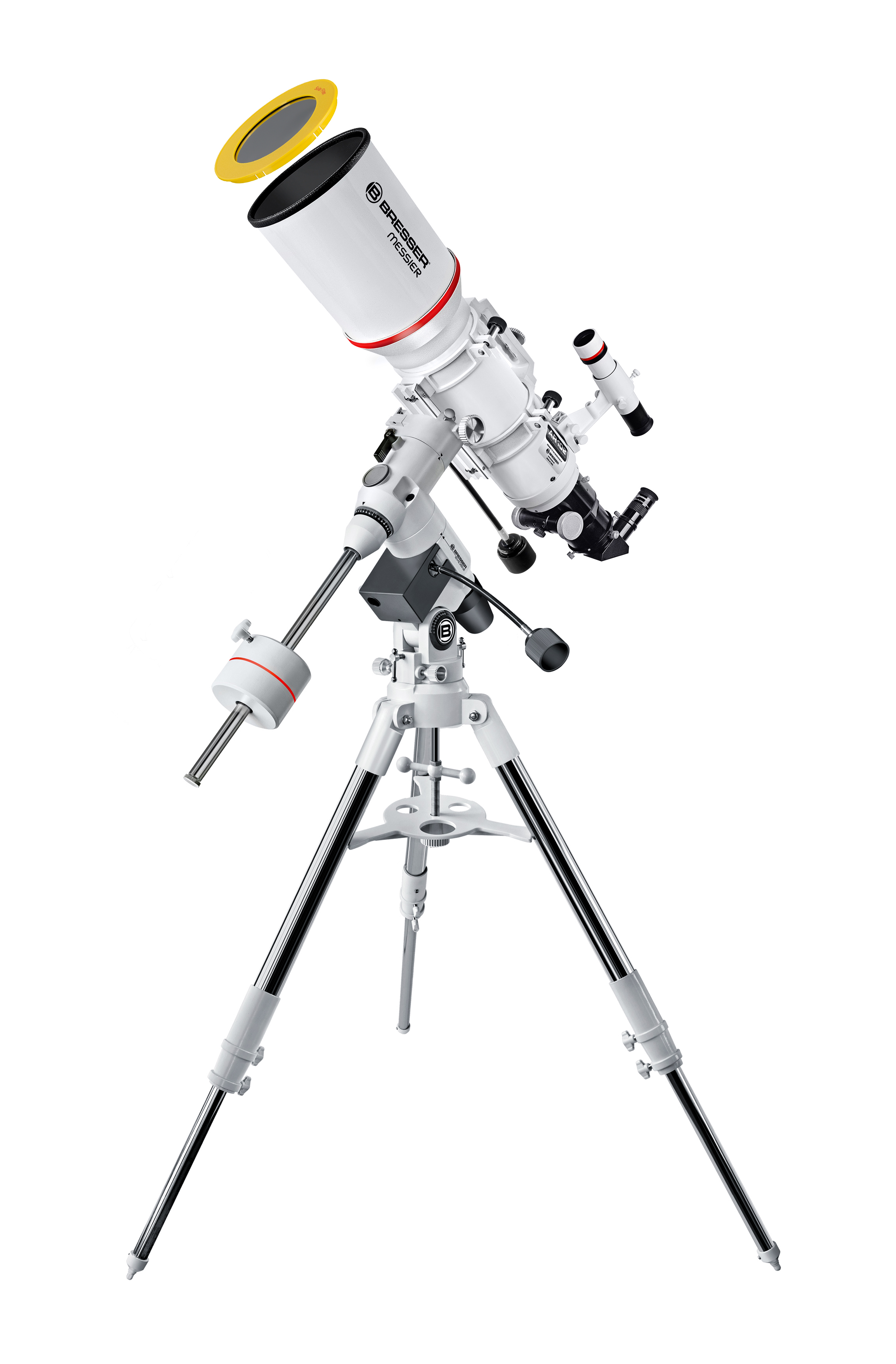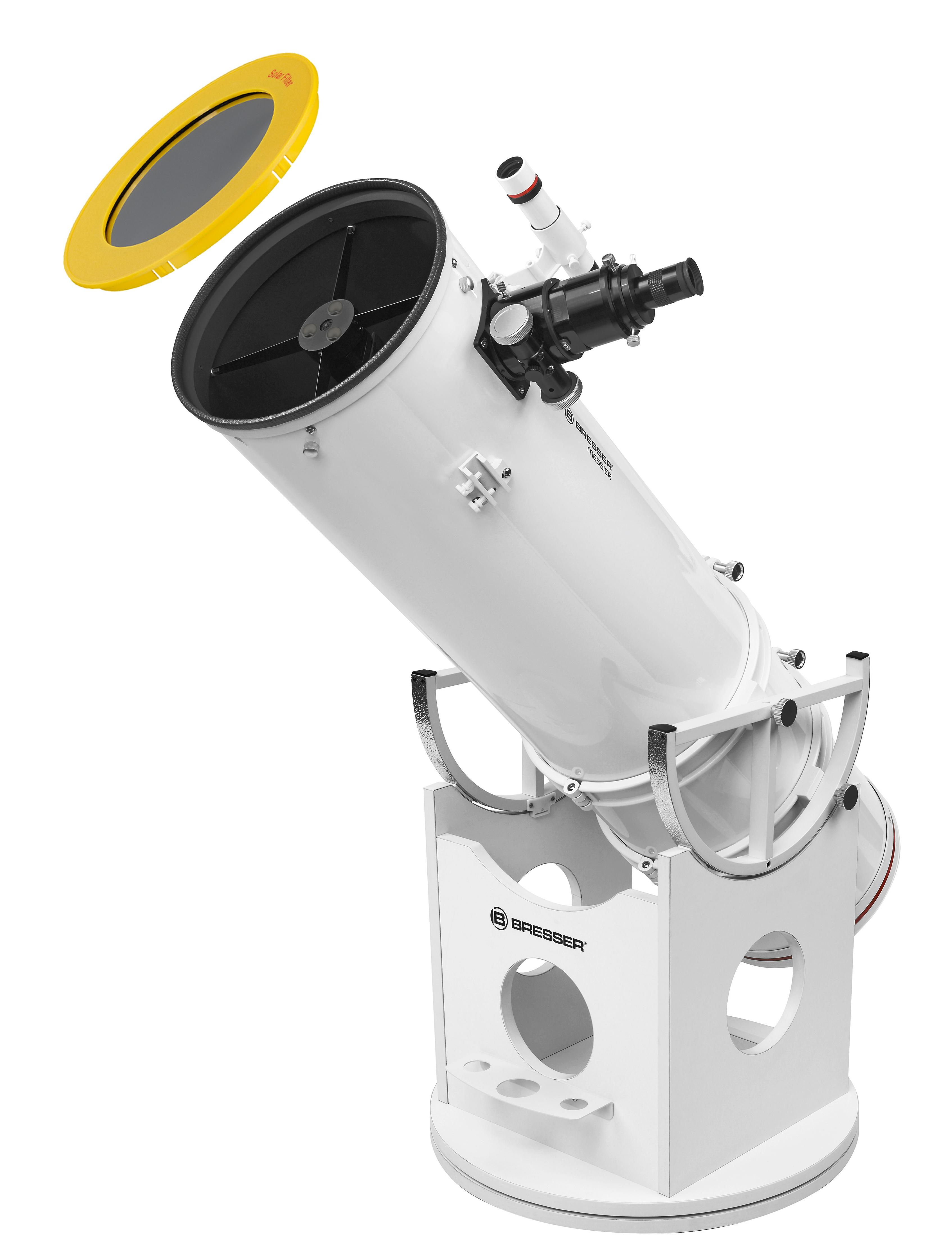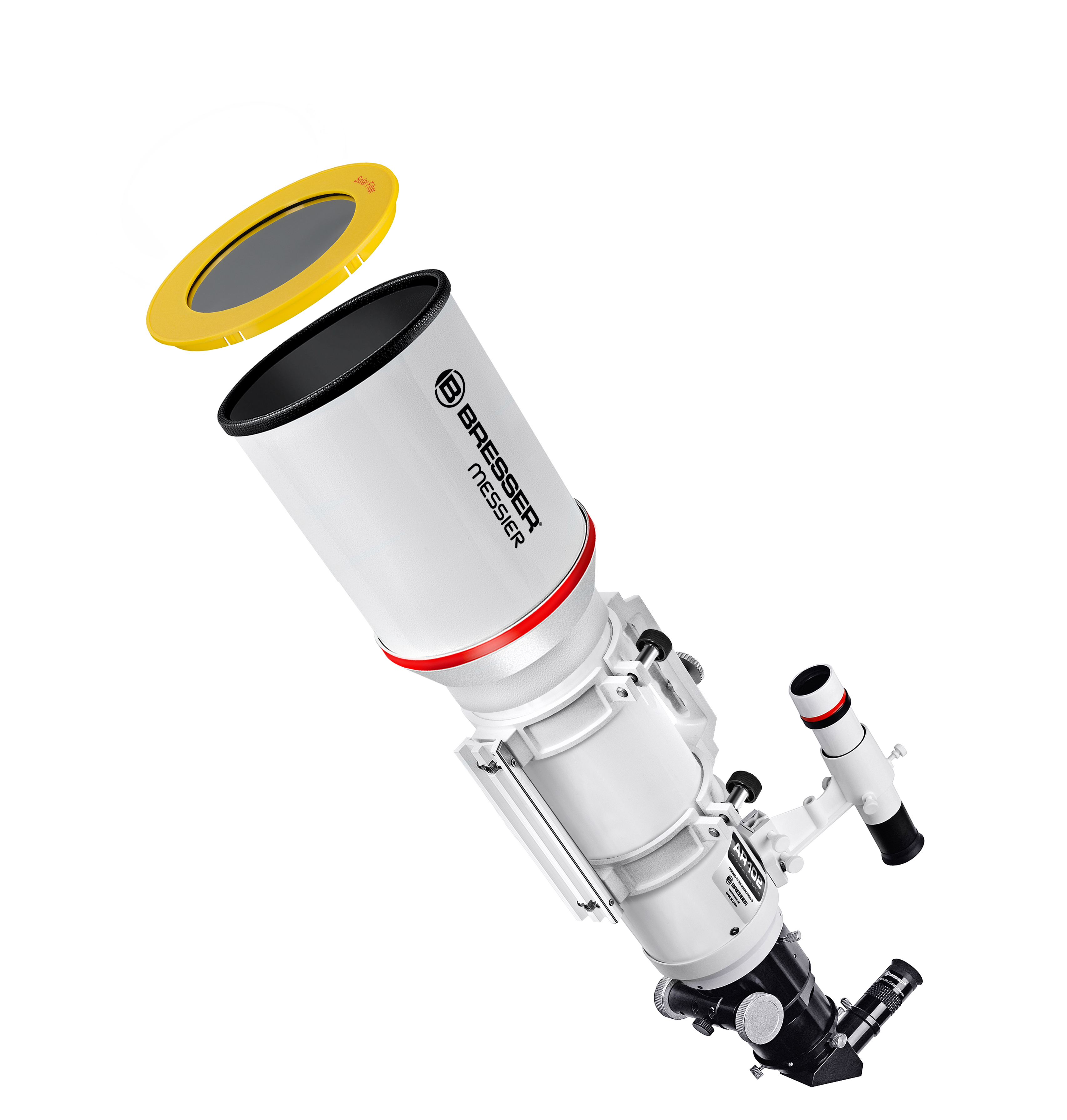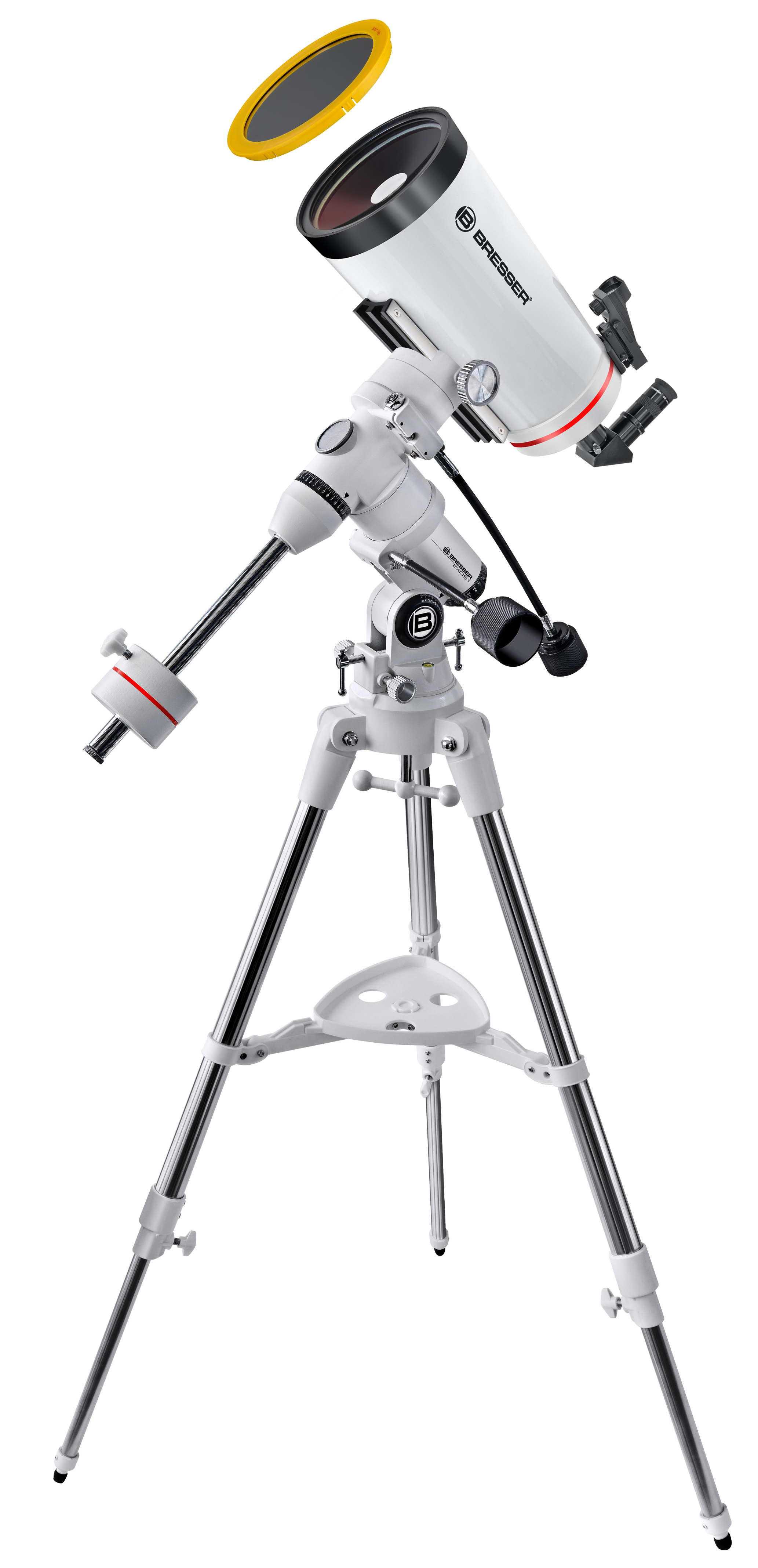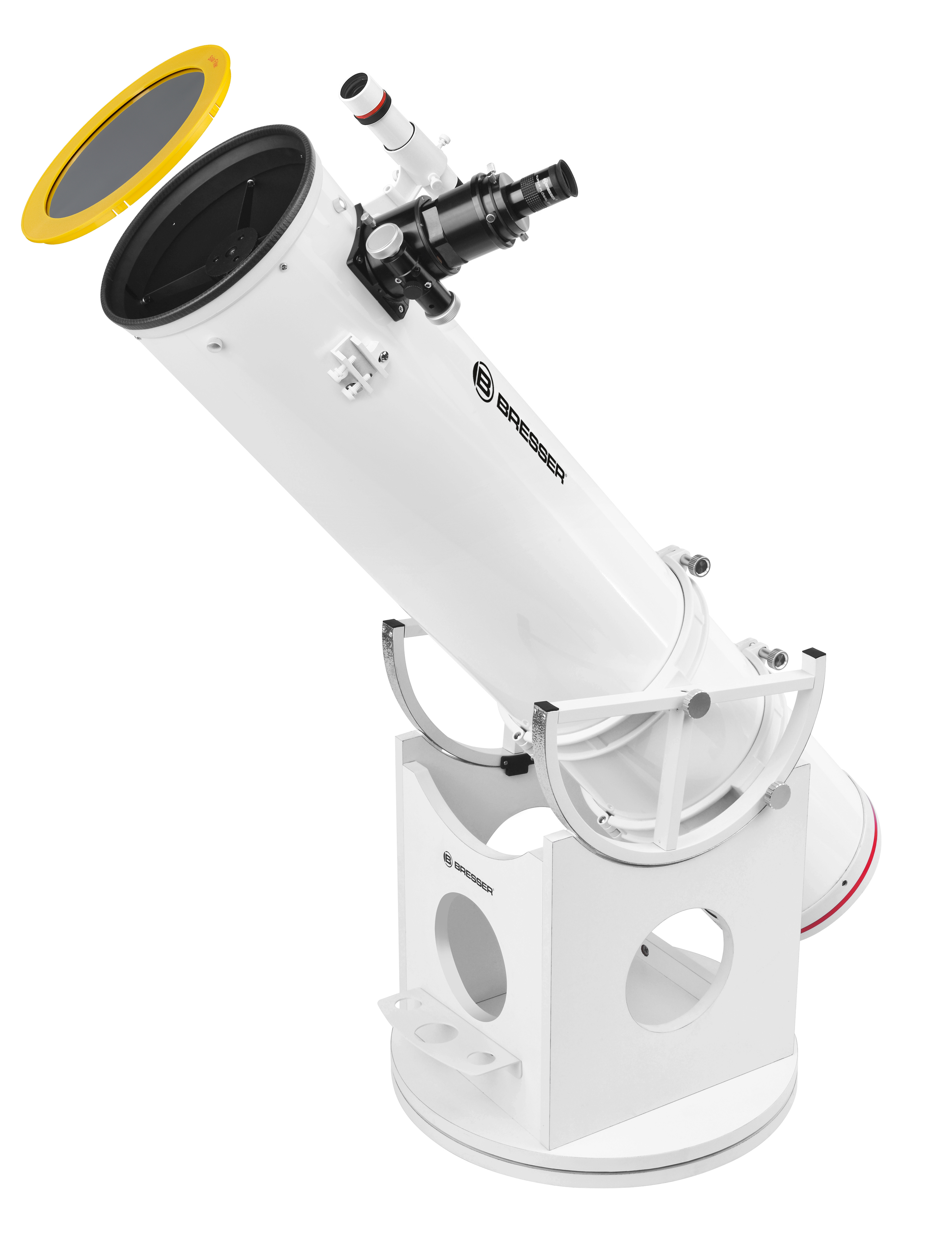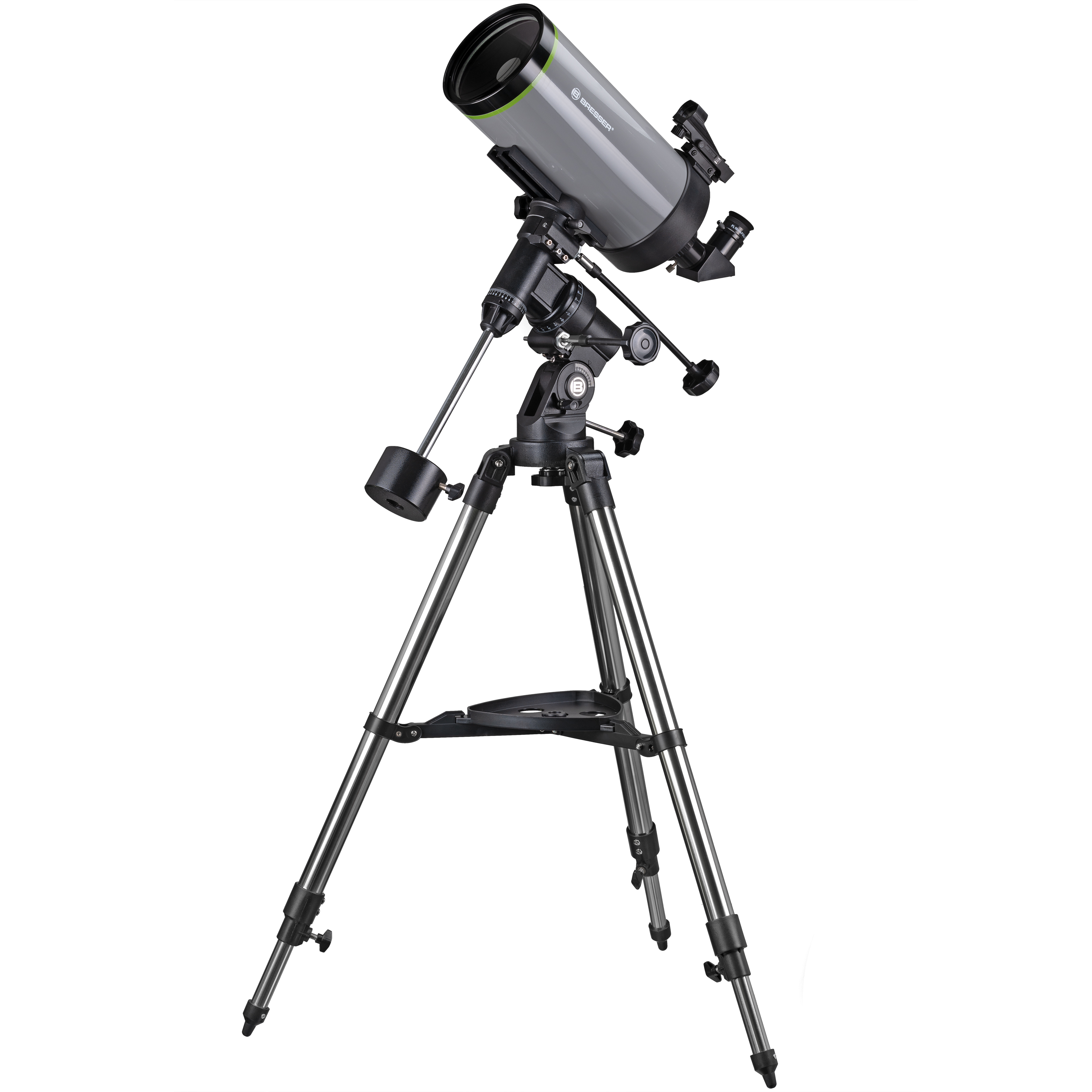
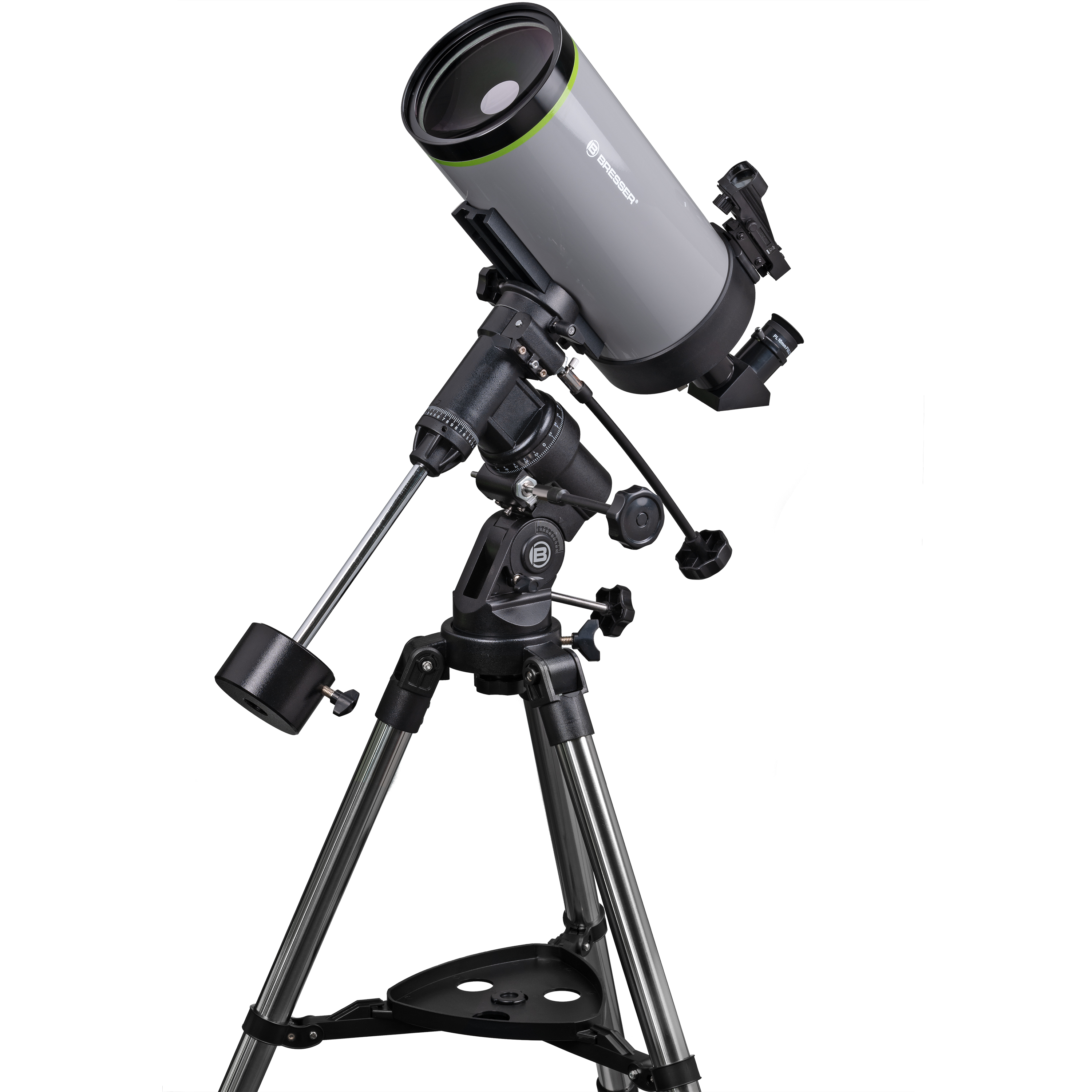
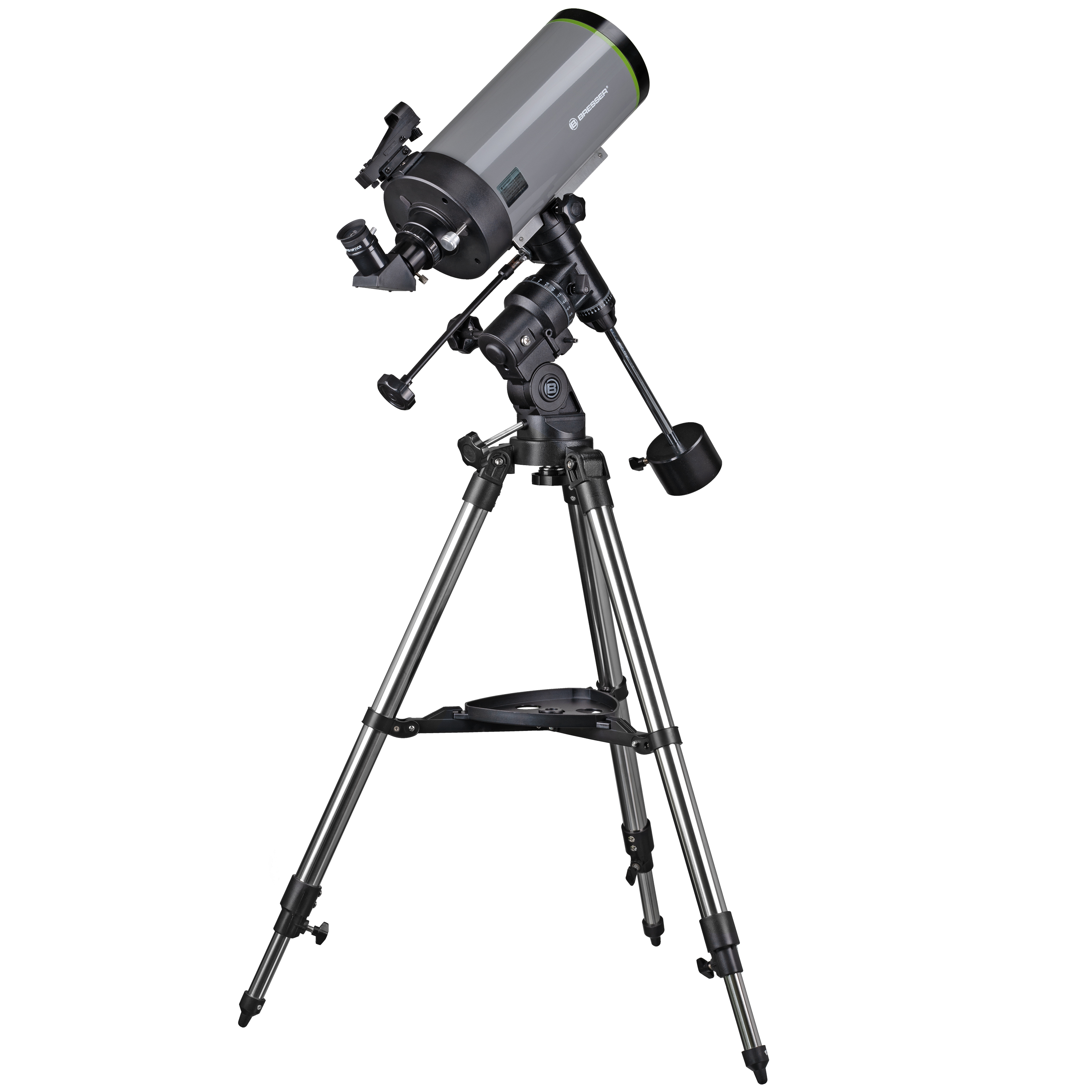
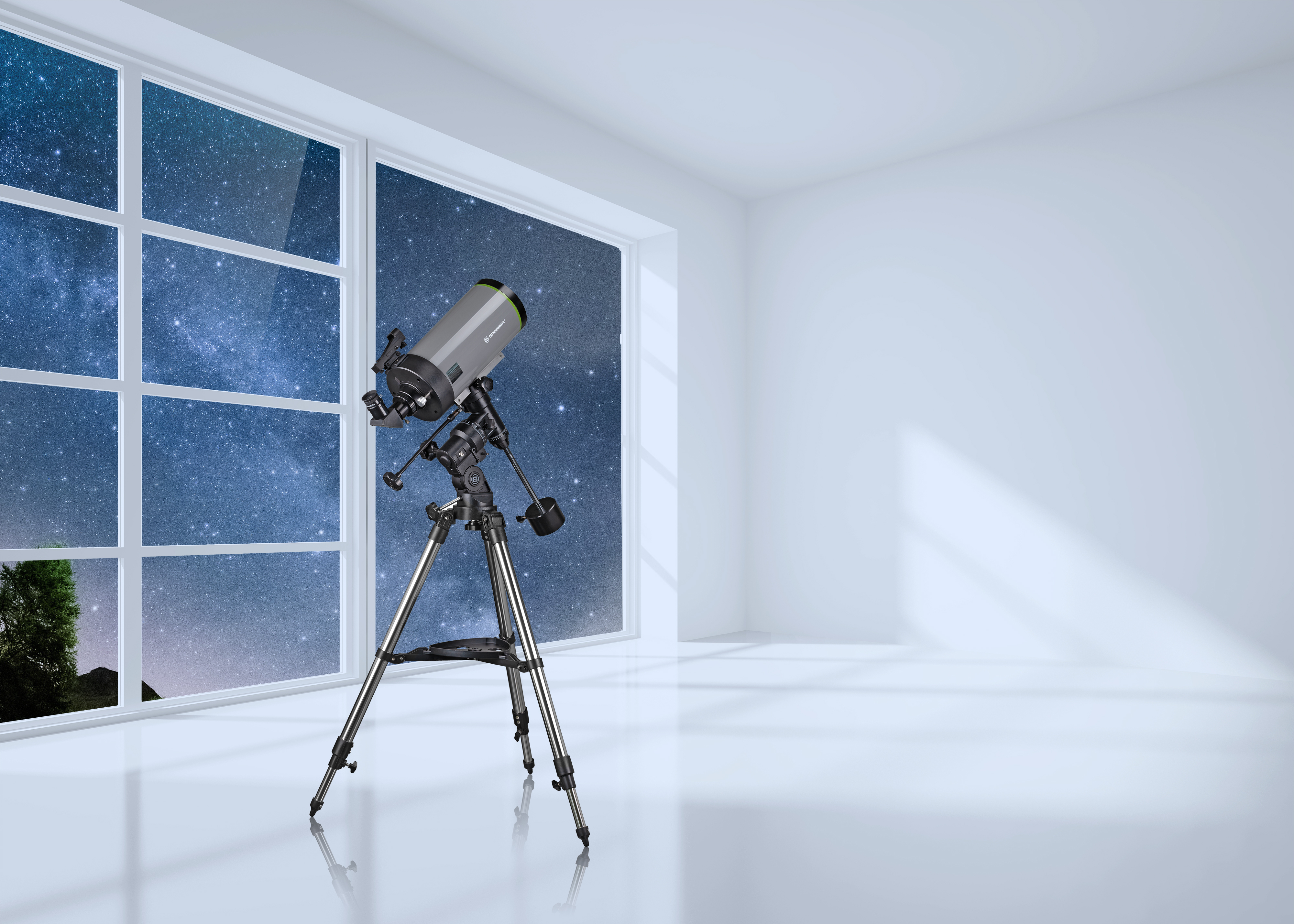












Product Highlights
Astronomy made easy: With the compact telescope with long focal length, equatorial mount and lots of accessories.
- Compact reflector telescope for beginners, high focal length
- Lens diameter: 127 mm / Focal length 1900 mm
- Includes smartphone camera adapter
- Includes: Telescope, mount, tripod, phone holder, accessories
- Mount: Equatorial EQ-3
Pack up for an exciting stargazing adventure with the 127/1900 telescope
If you're into astronomy, your gear needs to be portable. After all, the best stargazing spots are rarely right next to your front door. This Space Explorer telescope with Cassegrain optics has a compact design for maximum portability. After finding the perfect spot, even beginners will be able to set up the telescope in no time with the premium equatorial mount. Tracking is also a breeze: you can manually compensate for the earth's movements and ensure that your object stays in the field of view. The height-adjustable aluminium tripod keeps the telescope stable during your observations. Practical design: The tripod features an accessory holder for storing your gear, such as a Barlow lens or interchangeable eyepiece, and ensuring that everything stays within reach.
For night sky and terrestrial observations
If the moon appears to be upside down, this is completely normal for many telescopes. This telescope comes with a 90° erecting lens to ensure that everything appears the right way up. The moon is easy to find, but planets and star clusters can be more challenging. The red dot finder allows you to find what you're looking for and align the telescope accordingly. The red dot indicates the position at which your telescope is pointing. The telescope also comes with a smartphone camera holder, which allows you to take photos of your favourite scenes and share your astronomical discoveries with family and friends. However, you don't need to be out and about at night to see stunning scenes: our own planet also has a lot to offer. The Maksutov telescope is also great for wildlife observations.
The earth, moon, planets, stars - discover the solar system and more with the BRESSER Space Explorer MC 127/1900 telescope with an EQ-3 mount!
FEATURES
- Compact reflector telescope for beginners and advanced observers
- Optical system: Maksutov-Cassegrain
- Lens diameter: 127 mm
- Focal length: 1900 mm
- Collects 330 times more light than the human eye
- Simple tracking by hand
- Mount: EQ3, equatorial
- Height-adjustable aluminium tripod with accessory tray
- Tube
- EQ3 mount
- Height-adjustable aluminium tripod
- 2 Plössl eyepieces: 10 mm / 25 mm
- Barlow lens, 3x
- Red dot finder
- 90° star diagonal
- Smartphone holder
- Instructions with warranty information
| Colour: | grey |
|---|---|
| Finderscope: | Red Dot Finder |
| Focus Group [Telescopes]: | Beginners, Visual enthusiasts |
| Material: | Metal |
| Mount Type [Telescopes]: | German/Equatorial Mount |
| Optical design: | Maksutov-Cassegrain |
| Product Family [Telescopes]: | Catadioptric telescope |
| Typ [Batteries]: | CR2032 |
| Type of coating: | Multi coated |
0 of 0 reviews
Login
Accessories
Similar products
Customers also viewed


